More Content
Stay connected, additional links, customer experience lessons from red bull.
Here are four ways the energy drink brand uses unconventional thinking to stand apart from its competition.

June 23, 2011
Today's marketplace is increasingly competitive, and in a still-tight market, smart companies understand that it really comes down to the details when differentiating a product. Having superior merchandise or being first to market? Fantastic. But your competition is lurking right around the corner. Competing merely on price? That works too, especially if a Chinese factory and high-volume are key components of your business plan. Otherwise ...
And then there's service. Your customer service offerings can help you stand out after other companies have followed suit and re-produced what you've painstakingly developed, and your customer service will take you far after yet another competitor has lowered their prices. In short, the customer experience matters more than your product.
Take Red Bull. They know a thing or two about the customer experience.
Defiant, edgy and outside of the box
Bloomberg Businessweek published an article in May of this year titled " The Mastermind of Adrenaline Marketing ." The title refers, of course, to Red Bull's fearless leader, Dietrich Mateschitz, the Austrian who singlehandedly invented and continues to dominate the energy drink category. Curiously, Mateschitz's business model doesn't fit neatly into the product, price or service categories—yet Red Bull plows forward with enviable growth.
So what is Red Bull doing, and what lessons can we all learn from Red Bull's business model? First, let's clearly define the standard business strategies that the majority of companies focus on: product, price and service.
- Product: Companies that focus on succeeding based on product alone will attempt to be the first-to-market, spend a sizeable budget on R & D, or invest heavily in technology. It can certainly work, but it's expensive and a company has to work on continuously staying ahead.
- Price: Basing your business model solely on being the better deal is a tricky game. In a competitive field, companies engage in fierce battles to drive down prices, outsource and increase volume to offset decreased profit margins. However, a lower price is a tantalizing option for most consumers.
- Service: And then there's customer service. How good is your customer service? Customer service is special—you can teach it, happy customers will be ambassadors for your brand, and you can upsell or cross-sell your other products once you establish a relationship with your customers.
The Red Bull example
Product: Red Bull entered the picture in 1984 and started to gain momentum by 1987. First-to-market? Check. The "energy drink" category had not yet been defined prior to Mateschitz's re-purposing of a Thai concoction.
Yet in the "product"' category, what stands out about Mateschitz's beverage is that it really doesn't taste very good. Taste, apparently, isn't all there is when it comes to promoting a sugary beverage.
And, true to form, the copycats quickly followed. The energy drink industry is now a $10 billion dollar market in the U.S.
Red Bull, clearly, needed to move beyond product as their point of differentiation.
Price: When Red Bull began selling in the late 1980s, Mateschitz decided people would be more enticed if it was positioned as an ultra-premium product. So he doubled the price—selling it at $2.00, when all other carbonated drinks were selling for $1.00. And as we all know, it worked. His not-very-tasty, expensive beverage flew off the shelves.
Service: The category that Red Bull plays in—ready-to-drink beverages—doesn't quite fit in the customer service model that matters when selling a B2B product, service or B2C product that doesn't come in the refrigerated section of a store. Red Bull no doubt has a smart distribution strategy, but for the sake of this exercise, let's look at other components of service—the user experience.
A charming aspect of great service is that it puts a nice polish on your brand. When customers have a positive customer experience, they're likely to tell their friends and become a returning customer.
Red Bull has mastered the customer experience by becoming the face of extreme sports and associating its properties with "adventure" and pushing the limits. Red Bull is not so much an energy beverage as it is an aspirational brand.
Red Bull's not-so-traditional approach
Much of Red Bull's success comes from Mateschitz's out-of-the-box thinking. Here are a few lessons we could all use.
Believe in your product. Mateschitz frequently quotes this line: "It is a must to believe in one's product. If this were just a marketing gimmick, it would never work."
Do you believe in your product—really believe in your product? Red Bull, Mateschitz freely admits, is not so much a product as it is a philosophy. You have the ability to sell more than a tangible product—you can sell associations and a lifestyle when you place some credence in what you're selling.
Sell your idea, not just the product. Once you've defined the philosophy for your product, you then have the task of selling the idea. Red Bull doesn't sponsor basketball or football stars—for a reason. They sponsor BASE jumpers, Formula 1 teams, windsurfers, pro-snowboarders and motocross champs (to name a few). Who you align your product with matters.
Know your target audience. Red Bull isn't targeting soccer moms. Red Bull is targeting athletes and the youth who are drawn to extreme sports. Their top-level aspirational target—extreme athletes—has a nice way of trickling down to the everyday man who wants to identify with Red Bull's image. Long-haul truckers or college kids who want to pull an all-nighter? Target audience.
Take the risk with un-traditional marketing. If you ask most people where they've seen Red Bull's brand, their answer will not be a Super Bowl commercial. Instead, they will have likely seen the Red Bull brand on Shaun White's secret snowboarding practice half-pipe that Red Bull built and leaked to YouTube. And Red Bull's latest venture? Media. Red Bull will now be launching 1.2 million glossies and iPad apps that promote the Red Bull lifestyle.
There's a lot of clutter these days in traditional marketing channels. It pays to think outside-the-box.
Your advantage over Red Bull: The customer experience
For those of us selling products or services that don't lend themselves well to extreme sports or having our own fleet of performing vintage aircraft, we can still take many of Red Bull's lessons and pluck one of the best tools from the product, price, service toolbox.
When you focus on service and customer care, you will stand out in a marketplace replete with similar products at competitive prices. People will remember how they were treated by your customer service representatives, and in an increasingly impersonal technological world, you can build a brand around your customer service personality.
Peggy Carlaw is the founder of Impact Learning Systems. She is also the author of three books published by McGraw-Hill including Managing and Motivating Contact Center Employees . (Photo by Foxymoron .)

KEEP UP WITH RETAIL CUSTOMER EXPERIENCE NEWS AND TRENDS
Sign up now for the Retail Customer Experience newsletter and get the top stories delivered straight to your inbox.
SUBSCRIBE NOW
TOP STORIES

Interactive Customer Experience (ICX) Summit
September 9-11, 2024 | Charlotte, NC

Premium Content

Already a member? Sign in below.
sign in or register now
Forgot your password?
You may sign into this site using your login credentials from any of these Networld Media Group sites:

The Better Blog
Red bull’s customer engagement strategy has wings, by patrick gallant on 02/10/2022.

Red Bull has performed a magic trick in transforming an energy drink into an exciting experience.
Red Bull’s customer engagement strategy works to elevate any mundane product into something more than it really is. The same approach can be applied to other products.
Introduction
Suppose you had to market a new soft drink that had an unusual taste and came in a tiny can. Would you focus on the taste? Or the size of the can?
Of course not. Red Bull comes in a tiny can and has a mysterious flavor. Their marketing doesn’t focus on the product itself. Instead, it focuses on people and activities related to the brand image they want to project .
Some of Red Bull’s customer engagement strategies include:
- Lots of video and images
- Building mental associations with extreme sports
- Experiential marketing
- Tapping into influencers
- Focusing less on traditional advertising
Red Bull’s strategy works. In 2021, the company was worth almost $16 billion.
Blasting the Internet with Image and Video Content
The medium is the message. Red Bull chooses to publish primarily images and videos because visual media carries strong emotional messages. This helps load their product with emotional associations.
Images and videos contain lights, color, and action. They attract your attention and induce excitement. These are precisely the qualities that Red Bull tries to create.
Take a look at this video from Red Bull:
Only a limited amount of Red Bull’s content output is text-based. This means you never have to slow down in order to grasp the message — and Red Bull is all about speed. Despite having 240 characters to work with, almost all of its Twitter feed is actually images and videos.
Building Mental Associations with Extreme Sports
Red Bull does not associate itself with a nice quiet game like golf or chess. Instead, Red Bull is aligned with loud, exciting, fast-paced events, like snowboarding or surfing.
Actually, Red Bull is just a yellow energy drink. But their marketing hides that fact. The mental images most people associate with Red Bull are really not about the product at all.
Building mental associations like this helps in a few ways:
- It designates an ideal customer base.
- It appeals to aspirants to that customer base.
- It makes the product more than what it really is.
By associating itself with extreme sports, Red Bull picks out an ideal customer base: extreme athletes. All of Red Bull’s marketing positions the product as the drink of wild snowboarders and paragliders.
Because of this association, Red Bull appeals to people who want to be extreme athletes. Even if they never get off the couch, Red Bull offers them the feeling of being like those snowboarders or surfers they admire.
The strong mental associations mean that customers aren’t really buying a drink. They’re buying a lifestyle, or at least the image of one.
Red Bull is not that different from any other energy drink for most practical intents and purposes. After two or three, if someone swapped your drink with a Monster energy drink, you might not even notice the difference. In that case, you are literally only buying the advertising.
Experiential Marketing
Red Bull doesn’t just market itself online. It enhances its association with extreme sports by sponsoring and being visible at extreme sports events.
Take the Red Bull Flugtag, for example:
Other Red Bull experiences include:
- Red Bull Cliff Diving
- Red Bull Road Rampage
- Motorcycle Grand Prix of the Americas
These unique, fast-paced events are the image that Red Bull tries to present. What matters is the experience, not the drink itself. By becoming an experience, the drink transcends its material form.
Tapping Into Influencers
Influencers are an obvious good choice for Red Bull for three reasons:
- They transform Red Bull into a person.
- They feed into Red Bull’s “extreme” image.
- They add a layer of interactivity between Red Bull and its customers.
By tapping influencers, you get real faces to promote your brand. This de-emphasizes the product itself and turns it into a person.
Red Bull’s influencers are mostly extreme athletes like pilots or snowboarders. This feeds into their image as an ”extreme” brand.
Influencers interact with their audience. They each have a smaller, more niche audience than Red Bull, the company. This means they have more personalized ways of selling the product specifically to their audience.
Focus Less on Traditional Advertising
Red Bull only spends 20% of its marketing budget on traditional advertising. The remaining 80% goes to the tactics mentioned above:
- Extreme sports events
- High-quality video and image content
- Influencer experiences
Why is this good for Red Bull? Here are a few reasons:
- Red Bull does not want to be a “traditional” company.
- Traditional advertising emphasizes the benefits of the actual product.
- Word of mouth can go a long way when you sponsor crazy events.
Traditional advertising might have a hard time selling a weird-tasting drink that comes in a small can. While Red Bull has benefits, they are primarily intangible — an adrenaline rush or an association with extreme sports.
How to Build a Customer Engagement Strategy like Red Bull’s
Red Bull’s strategy works for products that are not remarkable on their own. The point of the strategy is to produce a magic trick- a transformation of the product into something more exciting.
If your product is hard to sell on its own merits, traditional advertising may not work for you. Consider Red Bull’s strategy.
First, identify your ideal customer. What do they do? What do they wear? Who do they hang out with?
Your ideal customer will form the core of your strategy. Everything else in your plan has to associate your product with that customer. That way, you can sell to people like your ideal customer, and also people who aspire to their lifestyle.
Then, associate your product with your ideal customer in every way possible. Get influencers who are like your ideal customer. Sponsor or hold events that they go to. Post on social media about their lifestyle.
Also, consider the type of content you produce. Red Bull produces mostly images and videos because those media carry feelings of excitement and fun. But if you want your product to have a more quiet, intellectual feel, consider using long-form blog posts instead.
Media Shower helps brands build customer engagement strategies to fit their needs. We understand the ins and outs of the strategies employed by companies as diverse as Krispy Kreme, Starbucks, or Red Bull. This helps us to craft a unique plan for you. Try us for free — click here.
Communicate better.
Our better newsletter gives you tips for better communication that you can immediately put to use..

The Ultimate Red Bull Marketing Strategy Study
Table of contents.
Red Bull has grown from a simple energy drink manufacturer to one of the most recognized brands in the world. It has become synonymous with sports, extreme performance, and victory. Red Bull is the extreme athlete of marketing, literally and figuratively.
A few key statistics and facts about Red Bull:
- Number of Red Bull cans sold worldwide in 2022: 11.582 billion
- Revenue of €9.68 billion
- Red Bull's marketing budget for 2022 is estimated to be €2,9 billion (it is rumored to be around 25-30% of the yearly revenue)
- Red Bull sponsors athletes in 73 countries around the world .
- Number of employees in 2022: 15,779
- The logo is a breed of cattle called gaur.
{{cta('559d57ef-9476-431a-97de-de513a92f974')}}
Red Bull History
Styrian success-makers.
The reasons for Mateschitz's conservatism lie in his family background. He grew up in modest circumstances in the upper Murgtal in Styria. His outstanding success is not an isolated case in this province. Arnold Schwar is a compatriot, as is the tennis player Thomas Muster, who for a time topped the world rankings ahead of Boris Becker, André Agassi, and Pete Sampras.
He is also a compatriot of Frank Stronach, who emigrated to Canada as a worker and returned to his homeland as a co-owner of the global auto parts manufacturer Magna. Styrians are said to have always been a bit their boss. Stubborn but not rebellious, strong, and persevering. Dietrich Mateschitz, who has been friends with half of Austria since his success and is nicknamed "Didi," has needed perseverance for his story to become a real success.
From jetlag to energy drinks
In 1976, Chaleo Yoovidhya introduced his Krating Daeng drink in Thailand. The name means "red gaur" in English. The maker was inspired by the energy drink Lipovitan, in which the main ingredient is taurine, and was popular with Thai truck drivers and blue-collar manual laborers.
When he visited Thailand in 1982, the Austrian-born Dietrich Mateschitz discovered that by consuming Krating Daeng, he was able to overcome the effects of jet lag, caused by the rapid change of time zones, much more quickly during the trip. Since the energy drink phenomenon was still unknown on the Old Continent, he was astonished at how many people consume the product, and almost immediately approached the owners of the company with the idea of bringing it there.
Mateschitz had been the international marketing manager for Blendax (now part of the Procter & Gamble Group) toothpaste at the time. The Yoovidhya family, which had already become rich through the pharmaceutical industry, welcomed the idea and began to develop a European business policy and strategy with the Austrian marketing expert.
Mateschitz founded Red Bull GmbH with Yoovidhya in 1984 intending to develop it into a global brand. Both parties invested $500,000, however, Yoovidhya and Mateschitz owned only 49-49% of the shares in the new company. The remaining 2 percent of the shares went to Yoovidhya's son Chalerm, but the agreement left Mateschitz as the de facto head of the company.

Product launch in Austria
The product was first launched in Austria in 1987. Mateschitz, still a bachelor at 39, has quit his lucrative multinational job and has been trying to introduce the Asian recipe to Austria for two or three years. The new product, the unusual flavors, the colors, the advertising are not the resounding success he had hoped for. After the initial setbacks, Dietrich Mateschitz does what he has never done before - he takes out a loan. The reason for his reluctance is simple: he was raised at home to believe that "a decent person does not have debts," and like many entrepreneurs, he still does not like financial institutions.
The startup’s growth has almost immediately slowed down because several well-known Austrian beverage companies considered the revolutionary idea too risky and refused to partner with Red Bull. The food authority was also not a fan of Red Bull, considered it dangerous, and banned its marketing in many places - but Mateschitz was not discouraged. Dietrich Mateschitz cites the three most difficult years of his life as the early days of Red Bull.
Being an experienced manager, he refused to lower the price of the not exactly cheap beverage. He is vigilant about consumer behavior. The highly stimulating product was finally a hit in Austrian discotheques. It was tempting to dance the night away. Word of the new wonder “drug” spread quickly across the border. However, on the German side, Red Bull was still not allowed to be marketed. It was banned for a time in Hungary, France, and Denmark because of what they consider to be its high caffeine and taurine content. It is the desire for the forbidden fruit that has brought the real breakthrough. Consumers "smuggle" a bootleg number of Red Bulls across the then non-EU Salzburg border crossing into Bavaria, where it is sold in nightclubs in violation of the law. From then on, the triumphal procession is unstoppable. And during this time, the custom of mixing it with vodka also arises.
Germany and the United Kingdom were introduced to Red Bull in 1994 after the company’s expansion in Eastern and Central Europe. It was able to win a 75 percent market share on the American energy drinks market despite the slow start and late expansion to the US in 1997.
In the process, Red Bull has also garnered some criticism for its use of extreme sports marketing and its impact on health. Due to this, the European Food Safety Authority (EFSA) and other food regulatory agencies have limited the levels of caffeine, taurine, and glucuronolactone in Red Bull and other energy drinks.
Key takeaways:
A serendipitous meeting between the Austrian and Thai founders of Red Bull was quickly followed by the realization of an excellent business opportunity and action. The recipe was ready - even if it still needed to be refined for European tastes - and the parties focused on market development strategies, sales, and marketing activities.
Still, launching the product in Austria was not a success, and many founders would have given up at this point. But Mateschitz kept his eyes open and recognized what the sales drivers would be in the early days.
- Word-of-mouth marketing,
- The feeling of uniqueness (energy drinks were not yet known to the European public),
- A stronger effect than coffee, which, mixed with alcohol, stimulated parties in Eastern Europe as a non-addictive and non-consciousness-altering substance,
- The progressive association of the brand with sports, in addition to nightlife.
Together, these elements have served to build Red Bull's success on an increasingly efficient and planned business foundation.
The Products
The product portfolio of the company.
Three of Red Bull's products are core products that are sold in all relevant markets, regardless of culture or target group:
- Red Bull energy drink: the familiar gray-blue metal can that comes in a 250 ml edition. In some countries, it is also available in a 350 ml and a 500 ml version.
- Sugar-free Red Bull: Instead of sugar from sugar beets, the company uses aspartame, sucralose, and acesulfame K to sweeten the product. The product's other ingredients and packaging are the same as the original energy drink.
- Red Bull Zero Sugar. The Zero and sugar-free variants differ little in terms of content. According to the company, the only difference is the taste.
However, there have also been numerous drinks that have been launched in limited quantities or connected with specific sporting events. These include The Tropical Edition, The Coconut Edition, The Red Edition, and The Summer Edition, currently available in four flavors. However, Red Bull not only limits the time of availability but also sells specific, localized products for the largest markets. For example, ORGANICS by Red Bull, which is only available in German, is not an energy drink but a soft drink that comes in six flavors. These include cola, tonic, and ginger drinks.
Red Bull cans are 100% recyclable. In addition, with only one manufacturing location, 80% of renewable resources are saved rather than using multiple ones.
Product localization
Almost all of the markets in APAC are served by Red Bull, and the company uses local development strategies to cater to consumer tastes in each market. Red Bull markets in the APAC region curate their product portfolios, and it takes a lot of time for each market to develop the most appropriate product selections. Local and center teams are continuously reviewing the portfolio of products to ensure that the energy, taste, and size requirements are met. Though the original blue and silver Red Bull Energy Drink is still a popular beverage, Red Bull is also interested in creating new products to match the changing tastes of the market.
Red Bull Editions are a seasonal range of localized products. To give an example, Red Bull has a Coconut edition in Singapore that includes coconut and blueberry flavors; in Australia, there are Orange editions (orange flavors), Tropical editions (tropical fruit flavors), and Red editions (watermelon flavors).
Each Red Bull market has a local team that interprets the meaning of the products to ensure they are relevant to the target customers. There is room for growth in the energy drink market through premiumization, even though the market is well established.
Manufacturing
A new Red Bull production facility is being built in Glendale, Arizona. A joint venture between Red Bull, Rauch Fruit Juices, and Ball Corporation, RRB Beverage Operating, is investing USD 250 million in the next few years to build a new 700,000 sq ft-sized facility. Originally, the company planned to start manufacturing in 2021, employing 140 people in the process. There is no news available on how COVID-19 has modified the plans.
Instead of keeping the production process in-house, RB outsourced it to Rauch. Among other beverages, it produces Red Bull's drinks in Nüziders, Austria, and Wildenau, Switzerland. It is only 40 kilometers between the two production facilities despite being in different countries.
It was previously made at a Swiss plant and imported to the U.S., but the company's growing popularity in North America and a threat to taxing cans and products imported from Europe, in general, led to the investment.
One of the joint venture partners, the Ball Corporation, which specializes in the production of aluminum and steel packaging for the food and beverage industry, opened an aluminum can manufacturing plant in Goodyear, Arizona in 2019, not far from the new project site in Glendale.
Sales channels
As a manufacturer of soft drinks, Red Bull does not market its products itself but distributes them to restaurants and stores via Red Bull-owned distribution companies. One such company is Red Bull Distribution Company , which is responsible for distribution in North America. The Group currently employs around 6,000 sales staff who distribute its products in 170 countries around the world.
The sales employees directly involved in the sales process are usually field sales representatives. They cover a predetermined territory by driving around and replenishing products from Red Bull in restaurants and convenience stores. They are also responsible for ensuring that the energy drinks are in the right, highly visible places on the shelves and that the company logos get the attention they deserve.
Of course, the larger chains and online beverage stores are already negotiating directly with distributors. The company's sales activities are rounded off by various corporate purchases.
Beverage retailers in particular tend to offer their customers a diversified product portfolio to generate more sales so that they can not only order a specific beverage but also upsell it. This involves offering additional options (both products and services) to a customer who has already been won over, which can then be sold at a much higher profit because there is no need to advertise and approach the customer again. In contrast, Red Bull has opted for a narrow product range - for a long time, there was only one type of energy drink and one flavor. Today, that range has broadened, but there are still many subsectors (e.g., alcohols, premium products) where there is room for further expansion.
Red Bull works with several international and local distributors, typically owned by RB. Sales are always B2B, with restaurants, small and large grocery stores, and corporate customers on the other side.
The Red Bull Brand
The Red bull brand stands out as a category dominating queen holding 42% of the global energy drink market in 2020. Second comes Monster with a 39% market share.
Company culture
The vision statement of Red Bull is “(The company) is dedicated to upholding Red Bull standards while maintaining the leadership position in the energy drinks category when delivering superior customer service in a highly efficient and profitable manner. We create a culture where employees share best practices, dedicated to coaching and developing our organization as an employer of choice.” (Source: redbull.com)
According to reviews on Indeed and Comparably , Red Bull is successful not only in building an outward-facing brand but also in creating a high-quality corporate culture. Typical feedback praises the internal social life, work environment, and highlights internal development opportunities. However, as in any other organization, those who work under a poorly performing manager are understandably dissatisfied with management skills, work-life balance, and supervisor availability.
Can of innovation: a branding move
The can became the symbol for Red Bull, even though it has been commonly used among beverage manufacturers. There is, however, a significant difference: instead of the usual 330 ml can, which is a bit chunkier, Red Bull has introduced the 250 ml sized container, which is thinner and taller than usual. There are two reasons for this: the unique appearance makes the product stand out from the competition, and it explains why Red Bull is much more expensive than the usual packaged drinks.
Red Bull’s target market: for those who need energy
Red Bull’s target market is young people between the age of 15 and 45 with high income. The company segments its target market even further offering as the main benefit a sense of belonging and enhanced physical and mental performance.
Matschitz explained the failure of Red Bull's first consumer test by claiming that such products only succeed in their intended environment. In sterile laboratories, no one needs extra energy, so Red Bull could not be treated at its true value. The moment the drink was introduced into gyms, parties, and bars, or even boardrooms, the rejection stopped, because the product found its right target audience.
Red Bull’s logo and design over the years
The energy drink was originally created for Muay Thai fighters and blue-collar workers in Thailand. A logo where two red bulls were readying to fight and the bright yellow sun rising behind them is typical for the APAC region. The only direct change was the “Red Bull” inscription written in bold, English font.

The Red Bull logo did not change significantly over the years. What makes the story special is that Mateschitz's marketing background allowed the team to spend extra time finding the right design. However, both the logo and the name and colors scored poorly on focus-group questionnaires. Nevertheless, the owners stuck to their original vision and did not change the design "rescued" from Thailand. Time has proven them right.
Red Bull brands and subsidiaries
Red Bull Racing
AKA Red Bull AKA RBR AKA Oracle Red Bull Racing is a Formula 1 racing team. The team won the 2021 championship with its driver Max Verstappen.
Scuderia AlphaTauri
AKA AlphaTauri is the second Formula One racing team of Red Bull. Originally the company’s junior team, today its considered to be the sister team of Oracle Red Bull Racing.
New York Red Bulls & New York Red Bulls II
The company’s two American professional soccer teams. The first participates in the Major league and the second in the second tier league.
FC Red Bull Salzburg
AKA FC Salzburg, the company’s Austrian professional football club. Red Bull bought the club in 2015 and changed its colors, a move that its fans found controversial.
FC Liefering
Red Bull's second league Austrian football club.
The German professional football club nicknamed Die Roten Bullen. The company bought the team in 2009 and in less than 9 years took it from the fifth tier league to the top-flight Bundesliga.
Red Bull Brasil & Red Bull Bragantino
The two Brazilian football clubs whose teams compete in the second and top tier of São Paulo state football league respectively.
EHC München & EC Red Bull Salzburg
Red bull’s ice hockey teams. The first competes at the highest level of professional German ice hockey. And the second competes in Austria’s top-tier ice hockey league.
Red Bull Records
It’s Red Bull’s global record label focusing on more niche genres like rock, alternative rock, punk rock and hip hop with bands like Awolnation, Twin Atlantic, and Beartooth.
The example of Mateschitz is rather the exception that proves the rule because his decisions - especially in the early years - were always at odds with business logic and common sense. The launch of the energy drink Red Bull in Europe was prepared through a series of processes: Testing the product, obtaining food safety and market approvals, market research as part of the launch. In the end, there were almost no areas left to support the owners' ideas, as neither the food authority nor market research considered energy drinks to be a good product.
Mateschitz, however, stubbornly stuck to his original ideas and, adapting some of the intellectual property brought from Thailand to European tastes, practically single-handedly created a youthful, trendy and energetic brand Red Bull.
Red Bull Marketing Strategy - Sponsoring Sports, Athletes And Events
Red Bull global marketing strategy focuses, but it’s not limited to, sponsorships of extreme sports, athletes and events of every scale, from local to global.
The company generates massive awareness with its presence in unique first-ever events like Felix Baumgartner parachute jump and in major regular events like the Volcom Pipe Pro and the Freeride world tour.
Red Bull’s marketing strategy, however, includes more traditional marketing practices and channels like TV commercials and social media with millions of followers across its Facebook, Instagram, Twitter, LinkedIn, and Youtube tens of accounts. It runs ads across every channel, trying to appear in front of its target audience everywhere it goes.
Red Bull marketing budget
A question on a lot of people's minds is how much does red bull spend on marketing? Unfortunately, Red Bull does not share its marketing budget, but it is rumored to be around 25% of the yearly revenue. So whilst we can only guesstimate what it spends, one thing we know is that it's a lot of money and a very important focus for Red Bull.
When the product becomes the means of Red Bull advertising
Sponsored stars are today's flesh-and-blood heroes: athletes, drivers, Formula 1 racers, and extreme athletes who stand for real achievement.
In addition to financial support, the stars receive equipment, clothing, and accessories with the Red Bull logo. And of course their advertised product, energy drinks in the required quantity. Red Bull's branded merchandise is particularly valuable because, unlike many beverage competitors, the company does not mass-produce merchandise - it is available only in the inner circle.
The international marketing activities of Red Bull are aimed primarily at young people who are attracted to and like extreme sports. The range of extreme sports targeted is very broad and includes:
- Mountain biking
- Snowboarding
- Skateboarding
- Wakeboarding
- Cliff jumping
- Ice skating
- Freestyle motocross
- Break dancing.
Red Bull also uses music and video games for marketing purposes and has brought in celebrities like Eminem (through its support of the Red Bull "EmSee Battle Rap championships").
Red Bull is also known for its events, including music and art conventions. In Hungary, the company launched Red Bull Pilvaker in 2012, one of the country's most unique music and cultural projects, which commemorated the 1848 Revolution and the War of Independence with the help of outstanding contemporary art artists. The popularity of Red Bull Pilvaker is reflected in the fact that in recent years all tickets for performances at Erkel Theater, which seats almost 2,000 people, were sold out within a few days.
Red Bull also maintains soccer teams in Austria, Germany, the United States, and Brazil - these teams also carry the brand name, Red Bull. By associating the energy drink with these activities, the company aims to reinforce the "cool" image of the product and thus the strength of the brand. The energy drink has also created a market for over 150 additional souvenir items.
On the PlayStation 3 community platform PlayStation Home, Red Bull created a dedicated in-game island in 2009 to specifically promote the energy drink Red Bull and the racing series Red Bull Air Race. In January 2012, Red Bull also opened its first personal community area, the " Red Bull House of Skate," which featured an indoor skating rink for visitors.
Red Bull's sports sponsorship activities focus on supporting talented young athletes and helping them achieve their goals. The Red Bull Junior program in motorsports is the most prominent branch of this, but the company follows this philosophy in its support for athletes, regardless of the sport. Sebastian Vettel, Daniel Ricciardo, and Danyiil Kvjat are among the most prominent students of the Red Bull Junior program.
Formula One Red Bull Racing

Red Bull Racing is the Austrian Formula 1 team owned by the energy drink company Red Bull. The company's other team is Scuderia Toro Rosso (later Scuderia AlphaTauri).
The team's direct predecessor is the Stewart Grand Prix, founded in 1997 by Jackie Stewart. In late 1999, it was sold to the Ford Motor Company, which raced it under the name Jaguar Racing. In 2004, Ford decided to sell the unsuccessful but costly team. It was bought by Dietrich Mateschitz, owner of the energy drink company Red Bull. The team was then able to take to the grid at the 2005 Australian Grand Prix as the successor to Jaguar, now in the blue and silver colors of Red Bull energy drinks.
Red Bull was no stranger to motorsport's premier class, having previously sponsored Sauber, Arrows, and its predecessor Jaguar. Having started its own team, Red Bull naturally terminated its contract with Sauber (the Arrows had already ceased to exist in 2002). The drinks company has also appeared in the Formula 3000 series and its successor, GP2, and has a European talent scouting program called Red Bull Junior Team. Later Formula 1 drivers have also emerged from the program, with Enrique Bernoldi, Christian Klien, Patrick Friesacher, Vitantonio Liuzzi, and Scott Speed all having raced in the premier class.
RBR enjoyed immediate success in its first season in 2005, thanks to two of its drivers, Coulthard and Klien. The 2005 Red Bull RB1 was based on the already papered Jaguar R6. The team used the weakest Cosworth engines and Michelin tyres throughout the season. The team exceeded expectations to finish seventh among constructors with 34 points.
For the 2006 season, Red Bull Racing changed engine suppliers and used Ferrari V8 power units for the season. Adrian Newey, who was signed from McLaren in November 2005, was appointed as chief designer. Newey did not play a major role in the design of the RB2, which was almost complete by then, and instead started work on the 2007 model. By 2007, the Adrian Newey-designed RB3 was finally completed, with the Renault engine replacing Ferrari's. Mid-season saw the arrival of Geoff Willis, who had worked as technical director at Williams and BAR and then at Honda. Following the departure of Michelin, Red Bull Racing naturally started on Bridgestone tyres. On the racing front, David Coulthard remained with the team, while Mark Webber took the other seat. Webber left the predecessor Jaguar after 2004 and joined the energy drinkers after two disappointing seasons at Williams. The team finished 5th in the constructors' championship with McLaren eliminated and 24 points, David Coulthard 10th with 14 points, and Mark Webber 12th with 10 points.
For 2009, the retiring David Coulthard was replaced by Sebastian Vettel from Toro Rosso, while Mark Webber remained with the team. The team ended the year with a double victory at the Abu Dhabi Grand Prix. Vettel finished second in the individual championship with 84 points, 11 behind world champion Button. The team finished second in the constructors' championship, 18.5 points behind Brawn GP. From 2010-13, RBR enjoyed a truly golden era, its World Championship victories making it unchallenged.
The 2014-20 Formula 1 era brought less success for Red Bull (regularly replaced by Mercedes in first place), but remained a worthy rival to Ferrari. In the 2021 season, with a Honda engine, they continue to pile on the surprises, and their fans are predicting the resurrection of RBR in an ever-strengthening F1 team.
Red Bull Ring

The Red Bull Ring (originally called Österreichring, between 1997 and 2003 A1-Ring) is an Austrian race track in Styria. The circuit itself is located in the territory of the municipality of Spielberg, but its access roads are in the immediate vicinity of the municipality of Zeltweg, which is why it is often referred to as the "Zeltweg circuit". The track was renovated in 2011 with financial support from the energy drink manufacturer Red Bull to make it suitable for Formula 1 again and will be back on the calendar for the 2014 season.
Red Bull Racing has won at its home track four times since its inception.
Red Bull sponsoring other sports
- In 2006, Red Bull announced they would sponsor the NASCAR Team Red Bull. Lowe's Motor Speedway was their first stop in the Nextel Cup Series. The team was shut down in December 2011 and its assets were acquired by BK Racing.
- A major sponsor of Repsol Honda, Red Bull is the title sponsor of Red Bull KTM Factory Racing and Red Bull Honda World Superbike Team.
- Football has also been a huge part of the company's activities. The Austrian club SV Austria Salzburg was purchased by Red Bull on 6 April 2005, and it was renamed Red Bull Salzburg, a move that has been heavily criticized by supporters' groups in Austria and across Europe. FC Liefering has also been purchased as Salzburg's feeder club.
- Since 2000, the company has owned the Salzburg team in the Austrian Hockey League, now named Red Bull Salzburg. Throughout 2012 and 2013, Red Bull became the team's title sponsor and then bought the club outright.
- A new League of Legends team was formed by Red Bull in 2017, Red Bulls, which competed in the European League of Legends Challenger Series from 2017 until it folded in 2018. Several Red Bull sponsored fighting game players to compete in Tekken and Street Fighter games, as well as The International winner OG, who competes in Dota 2.
Felix Baumgartner parachute jump from space

Baumgartner and his team saw a mission in the world record attempt, for which the athlete had been preparing since 2005. The jump offered the opportunity to collect data to improve life-saving for astronauts and pilots or potential space tourists and to study the behavior of the human body in the stratosphere. It is critical to make the return from space safe for space crews, as they may have to eject from the aircraft and it is life-threatening to enter the stratosphere in an unprepared space suit in such an emergency.
The first record attempt was scheduled for Oct. 9, 2012, at 11:42 a.m. local time, but a strong wind prevented the 834,497-cubic-meter balloon from inflating safely, as it was twisted by the wind. Wind gusts of up to 40 km/h were measured at the top of the balloon, although the wind speed was not supposed to exceed 5 km/h.
The next attempt was therefore postponed until Sunday, October 14 - a postponement that tested everyone's patience but was the only way to ensure safety. At the press conference after the jump, FAI record holder Brian Utleya announced that Baumgartner had reached a speed of 1342.8 kilometers per hour (Mach 1.24), breaking the speed of sound. The pilot came down from a height of 39,045 meters in 4 minutes and 20 seconds, covering 36,529 meters in freefall.
Red Bull, like Ferrari , has found in sports the marketing platform that best reaches its audience. However, the company has not limited its sponsorship activities to motorsports but supports all sports from ice hockey to extreme sports. The company invests most of its marketing budget in financing the Red Bull Racing Formula 1 team and maintaining the racetrack at the Red Bull Ring.
Red Bull also supports music as a nightlife player and various events aimed at partygoers.
Final thoughts and key takeaways of Red Bull’s story
Who owns red bull today.
Red Bull GmbH is a private company with its headquarters in Salzburg, Austria. Two billionaires own Red bull:
- Thai businessman Chalerm Yoovidhya, who owns the majority of the company sitting at 51%. His net worth as of 2021 is estimated at $24.5 billion.
- Austrian businessman Dietrich Mateschitz, who owns 49% of the rest of the company. His net worth as of 2022 is estimated at $26 billion.
Growth by numbers
According to Forbes , the brand that gives you wings sold 6.8 billion cans in 171 countries in 2018. Among the fastest-growing markets were India (+30%), Brazil (+22%), and Eastern Europe (+22%). Using a marketing strategy built around extreme events, Red Bull has sold a total of 75 billion cans since 1987.
Key takeaways from Red Bull's story:
- The founders’ agility: Red Bull would certainly not look the way it does today if the founders - a Thai pharmaceutical entrepreneur and an Austrian marketing manager - had not had a clear vision for the brand right from the start.
- Product portfolio: The soft drinks market is characterized by the dominance of aggregators (e.g. Coca Cola, which contrary to popular belief does not only produce Coke). To counter this trend, Red Bull has from the beginning thought in terms of a small product portfolio and focused on the energy drink market rather than a diversified range. It was not an easy task, as it was a pioneer in the field at the time of its launch - no other energy drink existed in Europe. The company invested a lot of energy in educating the market, which at first did not welcome this unique product, but now it has become an integral part of it.
- Marketing : Instead of investing millions of dollars in television, radio, and Internet advertising, Red Bull took a different approach from the beginning. Although it was initially forced to do so because many countries did not officially license the energy drink, word of mouth is still the strongest element in the company's marketing. The founders succeeded by identifying the two areas where there was a real need for energy drinks and focusing all marketing activities on them.
- Sponsorship : Red Bull quickly found its audience among athletes as well as party-goers, so it's no wonder that the company turned to sports sponsorships. One of Red Bull's main marketing weapons has been its own Formula 1 team, as well as sponsorship of a number of ball and extreme sports.
The companies more than 30-year history is a powerful story of challenges, of working against the wind, of the founders' strong vision, of defying business logic, and of perseverance. Even though the Austrian entrepreneur Dietrich Mateschitz has made countless decisions that would not have worked for others and that go against everything that business can teach us, the success of his company is beyond question.
If there is anything we can learn from him, it is surely his belief in his team and his own instinct to put an unknown product on the world map. Red Bull now inspires millions of people a year, its sales are skyrocketing (based on the sales statistics, every person on earth could drink one Red Bull), and its marketing efforts are leading the way for many other companies in the industry.
Red Bull Sales Strategy and Marketing Success
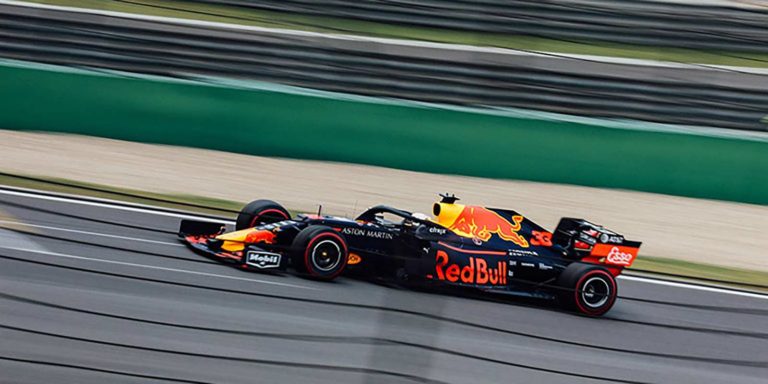
Red Bull is an energy drink that doesn’t do well in taste tests. Some say it’s too sweet. Others just shake their heads, saying, “No.” Its contents are not patented, and all the ingredients are listed on the outside of the slim silver can. Yet Red Bull was still the leading brand in the U.S. energy drink market as of May 16, 2021, and worldwide Red Bull sold 7.9 billion cans in 2020, up from just over 4 billion cans in 2011.
Says Red Bull founder Dietrich Mateschitz , “If we don’t create the market, it doesn’t exist.”
Mateschitz’s secret to creating a $16 billion worldwide stampede for Red Bull lies in a highly ingenious “buzz-marketing” strategy that herds consumers to exclusive and exciting events that get high media coverage. Red Bull supports close to 500 world-class extreme sports athletes that compete in spectacular and often record-breaking events across the globe. Mateschitz explains, “We don’t bring the product to the consumer, we bring consumers to the product.”
Today Red Bull is a powerful global brand and very few customers know the story of the highly talented, creative and determined salesman, publicity-shy Dietrich Mateschitz. Tiny Austria’s wealthiest billionaire, Mateschitz, located his office in the quaint lakeside village of Fuschl, near Salzburg, Austria. The global headquarters for Red Bull boasts state-of-the-art creative spaces to stimulate collaboration and creativity; and the spacious campus encourages biking, hikes as well as social gatherings at its lakeside areas. His large collection of vintage airplanes is located in a steel and glass hangar, which serves as an aviation museum and the home of the Flying Bulls at Salzburg Airport. He tries to keep things simple, working three days a week. Mateschitz farms out the production and distribution of the nearly 8 billion cans of Red Bull sold worldwide in more than 170 countries. The total number of employees worldwide has grown to more than 12,000, which brings the sales volume per employee to more than half a million dollars. Mateschitz not only generates brilliant sales and marketing ideas, he is equally talented in the execution of the biggest and boldest business ideas. His many projects include involvement across the world of sports and entertainment, including a $1 billion motor sport and aviation theme park in Styria, Austria.
The Red Bull Founder Story: Dietrich Mateschitz
Mateschitz grew up in a small village in Styria. His father, whom Mateschitz didn’t meet until age 11, was held in a POW camp long after WWII ended. Mateschitz was surrounded by teachers, but he wasn’t a good student. When he turned 18, he went to the University of Vienna. It took Mateschitz 10 years to finally graduate with a degree in World Trade. His friends said that Mateschitz liked to play, party and pursue pretty women. After graduation he decided to get serious and become a “really good marketing man.” His natural charm helped him land a training position at Unilever, and soon he was promoting dishwashing detergents and soap all over Europe. Colleagues described him as “funny, full of ambition and always filled with crazy ideas.”
Mateschitz had a natural talent for selling. He was creative and had a knack for getting things done. He soon got promoted to the position of marketing director for a leading, international toothpaste brand called Blendax.
After years of traveling and selling toothpaste around the globe, Mateschitz came to the realization that most successful managers live out of a suitcase, slowly turning gray and seeking comfort from a bottle or lonely women sitting in a bar. Mateschitz wanted more out of life; he expected more of himself and soon became obsessed with the idea of creating his own business.
Red Bull Ingredients: From Mind to Market
To many people in Austria, Mateschitz has ambitions that know no boundaries. When he goes to a party, people on Europe’s “A” list show up. When he is the host, such international stars as Naomi Campbell or California Governor Arnold Schwarzenegger appear. Born on May 20th in the sign of Taurus, Mateschitz goes after opportunity like a bull homing in on a matador’s red cape.
In the summer of 1982 Mateschitz read a story about the top 10 taxpayers in Japan. He was surprised that a certain Mr. Taisho, who had introduced a high-energy drink to Japan, made the top of the list. On the next stop of his sales trip – in Thailand – he learned from a local toothpaste distributor that energy drinks were a hot item among tired drivers stopping at gas stations. The top brand was “Kratindaeng,” meaning water buffalo. The ingredients were clearly written on the can. Like the original Yellow Pages, there was no trademark or patent to protect the formula.
Besides water, sugar and caffeine (equivalent to that in a cup of coffee), this drink contains an ingredient named taurine, an amino acid that, according to Japanese studies, benefits the cardiovascular system. Sitting poolside with Chalerm Yoovidhya, the son of the toothpaste distributor, Mateschitz suggested that they form their own company with the objective of introducing energy drinks around the world. Each partner would contribute about a half a million dollars in start-up capital. Soon after the fateful meeting, the optimistic 40-year-old Mateschitz quit his job and applied for a license to sell the high-energy drink in Austria.
Red Bull Slogan: History & Success
Mateschitz recalls how his Austrian friends reacted, saying, “They didn’t think it would work.” They thought that he had made the mistake of investing his life savings in a fad that would fade. The Austrian bureaucracy didn’t allow the drink to be sold without scientific tests. It took three years and many sales calls to get a license to sell the product. While waiting for the official license, Mateschitz asked his old school friend Johannes Kastner, who ran an advertising agency in Frankfurt, Germany, to design the can and logo. Mateschitz rejected dozens of samples before settling on a macho logo with two red bulls charging each other. Kastner worked diligently on a snappy slogan, but Mateschitz rejected one after the other, each time saying, “Not good enough.”
Kastner told Mateschitz to find someone else to come up with a better slogan, but Mateschitz pleaded, “Sleep on it, and give me one more tagline.” The next morning Kastner called and said, “Red Bull – gives you wings.” The slogan turned into a prophecy for the Red Bull brand, which continues to soar around the globe.
Red Bull History: Product Challenges & International Expansion
Mateschitz still had to find a bottler to produce his drink. Every bottler he called told him that Red Bull had no chance of success. Finally, Mateschitz found a sympathetic ear in Roman Rauch, the leading soft-drink bottler in Austria, and soon the shiny silver cans rolled off the production line. Within two years, and after many creative promotions, sales began to grow, but so did his losses. While a million-dollar loss in two years may scare an entrepreneur into closing the business, Mateschitz was undaunted. He says, “As long as I can think clearly, I can think of alternatives. All you need is bright eyes and a clear mind.” After he spent his life savings on the startup, Mateschitz financed everything without outside capital, and by 1990 Red Bull was in the black. He soon realized that Austria wasn’t a big enough market, and in 1993 he expanded to selling red bull to the neighboring Hungary and then focused his energies on conquering the German market.
Once the news of Red Bull’s advancing red bull sales spread in Europe, dozens of copycat competitors came on the market. Red Bull’s initial move into the German market was highly successful. After three months of skyrocketing demand, Mateschitz could not get enough aluminum to produce the cans anywhere in Europe, and sales of Red Bull dropped faster than Led Zeppelin. A competitor named Flying Horse became the market leader. It took Red Bull four years to reclaim the top spot in the German market.
The expansion to England proved to be even more challenging. The British marketing team was unable to use the term “energy drink,” since a pharmaceutical company owned that label. That forced Red Bull to use the term “stimulation” as a tagline to the logo. In two short years, Red Bull’s English operation was $12 million in the red, with only 2 million cans sold. Mateschitz fired the entire staff, pulled the product from pubs, and appointed an Austrian marketing director who concentrated on nightclubs and the student market.
In order to reach consumers without spending millions on advertising, Mateschitz resorted to buzz marketing to stimulate sales. He hired students to drive Minis with a big Red Bull can strapped on top. They cruised around campuses and offered free samples at parties.
The rules for creating buzz are astonishingly simple. Marketers need to reach the “alpha bees,” and if they like the product, they will tell other people about it. The authority of one alpha bee can influence the buying habits of hundreds. The student marketing buzz boosted sales, and by the year 2000 Red Bull’s sales in England soared to 200 million cans, which came close to its total of steadily growing sales in Germany.
Not every European country welcomes the sales of Red Bull. Denmark and Norway restricted distribution of Red Bull to pharmacies. Claiming health concerns, French authorities refused to authorize the sale of Red Bull in stores. Although France clipped Red Bull’s wings, Mateschitz isn’t discouraged, saying, “We are selling in 106 countries worldwide; we’ll save France for last.” He refuses to give up because he knows that his energy drink is not a health hazard.
Mateschitz thrives on resistance. Always eager to push the envelope, he’s hatched spectacular new marketing ideas that get consumers to flock to events where extreme sports athletes perform stunning acts that leave audiences gasping for air. Events include street luge (including jumps of 94 feet), air acrobatics, surfing a 25-foot tidal bore for 34 minutes on the Amazon River, rail-sliding, mountain bike free-ride competitions, motocross freestyle rallies and many more.
Mateschitz supports close to 500 daredevil, world-class athletes who come to invitation-only events from all corners of the world. While such countries as France put up boundaries to keep Red Bull out, Mateschitz knows no boundaries, and he sees no contradiction when he invites French athletes to compete in his events. Case in point, last year, the 24-year old Frenchman Cedric Gracia won the 2003 Red Bull Rampage (a world-class, extreme mountain bike competition) in Utah.
Last year Mateschitz sent a message to the French market and the world that the wings of Red Bull are alive and well. He sponsored an extraordinary stunt performed by the Austrian air acrobat Felix Baumgartner, who became the first man to fly the English Channel (22 miles) from Dover, England to Calais, France with a special 6-foot delta-wing made of carbon fiber strapped to his back. Baumgartner wore a special suit to insulate him against the freezing temperatures (minus 55 degrees Fahrenheit) when he jumped out of the airplane at 33,000 feet. He used oxygen for the first few minutes while he flew at a speed of more than 220 miles per hour. After less than seven minutes, Baumgartner pulled his parachute and landed safely in France. TV footage of Baumgartner’s world record event and the Red Bull logo were seen by more than 200 million people around the world.
Today, special Red Bull events take place in Australia, Asia, Africa, North America, South America, Russia and all over Europe. The pre-event parties include professional DJs, appetizers, photogenic women and plenty of Red Bull. Some events, like Red Bull’s Flugtag, draw crowds of 50,000 people or more.
There are always Red Bull signs in full camera view, an obligatory post-event party and, of course, extensive media coverage, including network TV and follow-up publicity on www.redbull.com , a spectacular global Website.
Red Bull Marketing Strategy: Soaring in the US
With an indomitable spirit for turning setbacks into comebacks, Mateschitz set his sights on the U.S. and started to test-market Red Bull in California. In April 1997 he started to compete against the aging soft drink lion Coca-Cola. The slim 8.3 oz. can of Red Bull contains less than half the amount of liquid as a bottle of Coke, but it packs far more caffeine (80 mg), which gives it the advantage of greater efficiency. In the first year, Red Bull sold more than 5 million cans in California.
Red Bull replicated the buzz strategy that worked so well in Europe. Volkswagen Beetles with huge Red Bull cans strapped to their backs showed up at the beach, at colleges, gyms, office buildings or construction sites with free samples where people might need a boost. Congenial Red Bull salespeople (called “Musketeers”) offered free coolers to bars, and soon bartenders learned that this new drink was a money machine. Red Bull mixed with vodka or Jager became one of the hottest drinks across the nation. Bars in LA charged $10, in New York $12 and in Miami $16. Soon Red Bull was flowing across America.
The U.S. marketing buzz and bull machine spun tales that were picked up by the press. Red Bull’s slogan “gives you wings” led newspaper reporters to print quotes from consumers like “You can get drunk and stay wide awake,” or “It’s the poor man’s cocaine.” One rumor even claimed that the drink contains bull testicles.
Mateschitz enjoys the free publicity, but he is single minded when it comes to framing the real purpose behind his energy drink, saying, “The motivation to have a Red Bull at night is the same as during the day, to wake up, be at your best, and have fun.”
As in Europe, news stories of Red Bull’s sales success spawned competition and many Red Bull imitation products were introduced to the U.S. market. SoBe’s Adrenaline Rush occupies second place with 12 percent market share. Anheuser-Busch has a drink called 180, Coca-Cola markets KMX and Pepsi sells AMP. All come in slim cans but none come with the energetic and emotional brand image that marketing master Mateschitz created.
There are also smaller competitors like Pink, Vegas, Go Fast or Rockstar, with small sales teams calling on bar owners and trying their best sales pitches against Red Bull’s marketing power. Four former Red Bull North America executives believe that they can compete against their former employer with a new drink named Roaring Lion. The sales pitch on their Website (July 04) tries to persuade bar owners by saying, “At $1.33 per can, the market-leading energy drink is your most expensive nonalcoholic mixer…Roaring Lion saves you 80 cents per 8.3 ounces. On a current usage of 50 cases per month of energy drink, you can expect to save $990 per month.” A beverage industry executive laughed at the threat, saying, “Red Bull’s sales keep on soaring; Roaring Lion is still snoring.”
According to the Statista , as of May 2021, Red Bull was the leading brand in the U.S. energy-drink market with a 23.3% percent market share and sales around 2.89 billion U.S. dollars.
Red Bull Catches Air: The Flying Bulls
A few years before he launched Red Bull, Mateschitz developed a passion for flying. Once his company turned substantial profits, he funneled the excess cash into a superb collection of vintage aircraft. In 2000 he created a Red Bull subsidiary, named it Flying Bulls and purchased and restored such planes as two Corsair fighter-bombers, a twin-engine DC-6 that belonged to former Yugoslav Communist ruler Tito, a T-28-B trainer, four seaplanes, and a Bell 47 helicopter – 16 planes in all to date. To create a suitable home for his growing fleet of Flying Bulls, Mateschitz worked with an architect to create a 60,000-square-foot airplane hangar. Not just a simple utilitarian box to store aircraft, mind you, but a superb wing-shaped glass and steel air museum that not only displays each plane with an impressive Red Bull logo, but also has a lounge and a first-rate restaurant that rotates famous chefs from around the world. The builders used 1,200 tons of steel and 1,754 different-size panels of special glass.
To transcend the boundaries of aviation, Mateschitz added an art collection to the air museum that he branded Hangar-7. Recent exhibits included the photographic collection of the Wright brothers and sculptures and paintings by Jos Pirkner who designed the Taurus trophy for the winner of the annual World Stunt Awards.
At night the access road to Hangar-7 lights up like a runway to signal the visitor that this is a special place that gives wings to your imagination. After dinner, visitors can enjoy a drink at the bar called 360, which is located under the domed ceiling of the hangar and is accessible through a ramp that leads from the restaurant to the bar. What makes the bar the hottest place in Salzburg is the glass floor that allows patrons below to look at the soles of the feet of the bar guests 30 feet above. The bar is open every night until 3 a.m.
Occupants of the bar have a spectacular view of the aviation museum below. Special lights embedded in the museum floor light up at night and give the visitor the impression of looking at the stars in the sky while they see the dark shadows of the aircraft below. A stickler for detail, Mateschitz decided that the star constellation must replicate the night sky of the day of the opening of Hangar-7. At the opening party of Hangar-7 last year, more than 2,000 VIPs paid $600 each to walk on a 100-foot red carpet, flirt with the press, tour the hangar, enjoy a fabulous reception and witness a spectacular air show that contained 15 different aerial scenes that followed themes from Greek mythology. For example, Zeus transformed from a bull into a fighter plane, and four violinists played a concert in four separate Blackhawk helicopters.
Every Red Bull vintage plane in Hangar-7 is meticulously maintained and in top flying condition. In fact, every plane housed in the hangar has a full tank and is ready to roll out to the Salzburg airport runway and take off. On weekends, Mateschitz likes to take one of his planes out for a spin, flying over the beautiful meadows of the Salzburg lake region and enjoying the landscape below.
Arnold Schwarzenegger, Red Bull, and The Taurus Awards Five years ago, Mateschitz called Arnold Schwarzenegger with his “big idea” – to create an annual award for the world’s best stuntmen and stuntwomen. Arnold didn’t buy the idea, saying, “We already have too many awards in Hollywood.” But Taurus Mateschitz displays an uncommon tenacity when it comes to turning ideas into reality. Like a bull, he locks horns with adversity and never gives up.
Mateschitz went back to the drawing board and began to recast his unique selling proposition. He began thinking about the needs of the actors who risk their lives performing dangerous stunts and established the Taurus World Stunt Awards Foundation, seeding it with a personal check. He also mandated that the proceeds from the awards show and related fundraising activities would help perpetuate the grant fund dedicated to the support of stunt performers in need. Stunt performers can apply for a financial grant in the event of any disability. Mateschitz commissioned artist Jos Pirkner to create The Taurus, an impressive 31-inch bronze statue that weighs more than 26 pounds. On May 20, 2001 (Mateschitz’s birthday), the first Taurus World Stunt Award show was held in LA.
As a politically correct gesture to his Austrian buddy, Mateschitz handed Schwarzenegger his own Honorary Taurus Award. Few people in the audience had a clue what a gigantic sales effort enabled the show, which has grown bigger with every year. Even fewer people watching the star-studded award show on national television noticed the clever and subtle visual connection between the huge wings of the Taurus statue and the catchy Red Bull slogan “gives you wings.” It was Mateschitz, the subliminal image maker, who pulled the greatest Hollywood stunt.
The Billion-Dollar Theme Park
In May of 2004 Mateschitz celebrated his 60th birthday. At an age where the average Austrian ponders retirement, the Red Bull founder, whose net worth according to Forbes magazine is more than $1.4 billion, announced even bigger plans that dwarf everything he’s done before. Mateschitz has hired a team of 40 people to work on his idea of a motorsport and aviation theme park with a price tag of $1 billion.
Including four open-air arenas capable of holding between 6,000 and 100,000 spectators, the park will be completed in three years. One of the racetracks will be reserved for Formula 1 races. Visitors will be able to race cars and go-carts, ride Enduro motorcycles and fly different airplanes. There will be several restaurants, two hotels and a shopping plaza.
A motorsport and aviation academy will offer a high-tech training center for 700 students who can enroll in a nine-year academic education program that will end with a high-school diploma. The Austrian Air Force has expressed interest in the Aviation Academy’s pilot-training program. The theme park will attract between 2 and 3 million visitors a year.
While Mateschitz thinks of his legacy, he’s unaware that he’s already turned into a living legend. He doesn’t like to talk to the press, but when he does, he often makes references to mythical transformations. “Every boy is fascinated by mythology,” he once told a reporter. “I was most fascinated by Zeus, the king of the gods. When he came down to earth to see Europa, he changed into a bull.” In his heart, Mateschitz is still the little boy who loves to change into a bull and charge around the world with boundless energy. Mateschitz is fulfilling his dreams 1.5 billion times a year, for in every 8.3 oz. can of Red Bull resides his secret ingredient: an idea that took wings.
Get our eNewsletter
Get the latest sales leadership insight, strategies, and best practices delivered weekly to your inbox.
Upcoming Webinar
Revenue enablement 2.0: how to sell more using sales-first tech and automation.
May 8 at 1:00 p.m. ET
REGISTER NOW
FREE ENEWSLETTERS
Subscribe to get our weekly sales management digest..
Sign up now.

Top Sales Enablement Vendor in 2023
See the list.
Selling Power is a Registered Trademark and the property of Personal Selling Power Inc.
Copyright © 1998 - 2024 Personal Selling Power, Inc. All Rights reserved. Privacy Policy

- Consumer Goods
- Food & Beverages
- Travel & Tourism
- PR Newswire

Red Bull Business Model: Diversifying into the future
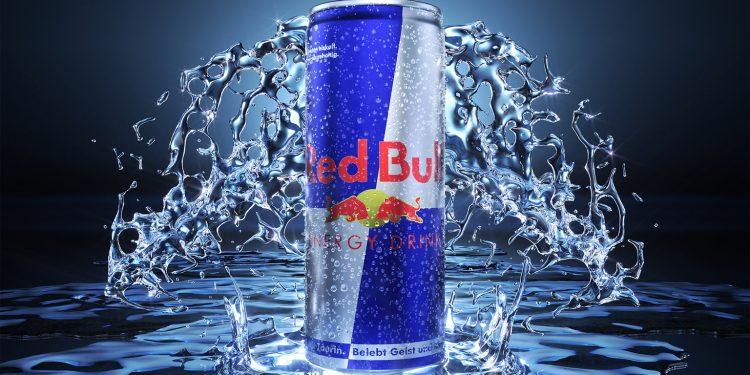
In 2019, Red Bull sold one can for almost every person on the planet. But besides selling 7.5 billion cans of a very sweet drink, they also run two Formula One Teams, five professional football clubs and one ice hockey team. Not mentioning, events like the crashed ice challenge or the Wings for Life Run, the thousands of athletes that Red Bull sponsors and the media production they run.
Obviously, Red Bull does much more than selling an energy drink. But is all that just marketing?
We take a closer look at how Red Bull makes money.
In the summer of 1982, the Austrian businessman Dietrich Mateschitz found himself suffering from jet lag during a business trip to Thailand. He tried a local drink called Krating Daeng, which improved his jet lag substantially. Krating Daeng can be translated to Red Gaur, a Gaur being a huge bison from Southeast Asia. So it basically means Red Bull.
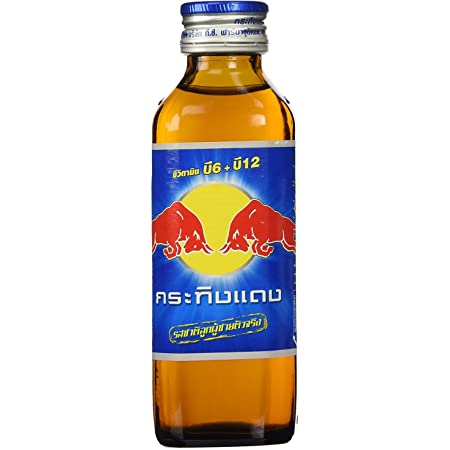
Inspired by the magical qualities of the product, Mateschitz decided to bring the product home in the format of a brand new product category – the energy drink. He pitched his idea several times to Western investors but got turned down because they didn’t see a market for the product outside of Asia. Mateschitz was well aware that there was no market at the time. So he decided to create one, famously quoting:
”If we don’t create the market, it doesn’t exist”
He was so convinced of his product, that he invested half a million himself. He then teamed up with the boss of the Krating Daeng manufacturer, who also invested half a million for the other half of the company.
Next, Mateschitz adapted the formula and flavor for the European market and successfully launched the product in Austria in 1987. Because the drink was initially banned in Germany, Red Bull profited for the reputation as an outlaw brand. Many young Germans would cross the border to Austria to buy the banned energy drink and Red Bull sold over a million cans in their first year.
From Austria, it quickly spread across Europe, first to Slovakia and Hungary in 1992 and then to Germany and the UK in ’94. When they enter the US market three years later, Red Bull was selling over a million cans every day.
Soft drink giants like Coke and Pepsi could benefit from deeper pockets, but they underestimated the strategic intent of Mateschitz and the upcoming brand. He created a new species of corporation that focuses only on the downstream activities of the value chain while outsourcing operations such as production and logistics.
That means that Red Bull itself is actually not producing the drink – production and filling of the can is completely outsourced, so Red Bull can fully commit its resources to selling the drink. Looking at the profit margin, that pays off. One of Red Bull secrets to success is that they can charge a much higher price than their competitors.
Red Bull makes each can for approximately $0.09. The suggested retail price for a can is $3.59 USD. The biggest customers like Walmart and big grocery stores pay between $44 and $48 USD per case of 24 cans. That means $1.87 USD per can, which is more than 20 times the cost of production.
To create a market for his product, Mateschitz first focused on the club scene. It’s really hard to imagine a student party without several packs of Red Bull on hand, since the company actively made use of ”student brand managers”. Brand managers were popular university students encouraged to promote Red Bull on university campuses and to throw parties at different locations, supplied entirely by Red Bull.
Volkswagen Beetles with larger-than-life Red Bull cans strapped to their backs showed up at beaches, at colleges, gyms, and even office buildings with free samples. Bartender quickly learned that this new drink was a money machine.

It is likely that you have at least once tasted a Red Bull mixed with Vodka, or Jager, since the mixes became two of the most popular drinks in bars everywhere. Soon, the beverage was sold at nightclubs and festivals around the world, creating a competitive advantage for the Austrian brand.
This was only the beginning of the Red Bull marketing machine. Through sponsorship and ownership of sports teams, Red Bull continuously engages with the customer in a deeper way than traditional advertising ever could. This allows its customers to feel active and intense, by drinking from a can that bares the same logo as Formula 1 car, a skateboard, and a record-breaking parachute.

Instead of sober story telling, Red Bull employs story-performing. They don’t do conventional marketing or try to look for stories to be associated with. They create their own stories and produce the content with their own media house. That means, they hold the rights to all pictures of their events.
With social media, this results in viral communication effects that drastically improve the return on marketing. The ultimate example for Red Bull’s story-performing was Felix Baumgartner jumping from space in 2012. The project cost Red Bull an impressive $50 Million USD, but some experts estimated the global reporting about the event to be worth approximately $6 Billion USD. So it was probably worth it.
Both, sponsoring extreme sports events and selling products with an edge, enables Red Bull to remain the market leader in its category. In 2019, they sold 7.5 billion cans, which helped create a revenue of over $6 Billion USD.
To reach that much revenue, they spend almost a third on marketing. Despite the huge marketing budget, the revenue growth of Red Bull slowed down since 2012. The company is depending almost completely on one product only: the energy drink. This limits its growth and can eventually become a big risk especially with a growing awareness for health and nutrition, the focus on a product that causes obesity, insomnia and diabetes might backfire eventually.
Investments in sport teams and media production are therefore not only marketing activities, but the attempt to diversify and create additional value chains next to the can business.
To implement sport as a business, Red Bull takes advantage of a fully integrated entertainment and media value chain that ranges from media production to team ownerships, broadcasting arrangements and contract management.
One example how that strategy can work are Red Bull’s football teams. Owning more than one club gives them the opportunity to use synergies, for example when developing talent.
A player can potentially start his career in Brazil, move to Europe to play in the smaller Austrian league for Salzburg and eventually join Red Bull Leipzig when he is ready to play in the Champions League. At the end of his career, he might move to the New York Bulls to spend the last years in the Major League Soccer.
The team in New York is also a good example how private equity in sports can generate value for Red Bull. They purchased the team for an estimated $25 Million USD in 2006. According to Forbes, the team is now worth some $290 Million USD. So Red Bull was able to tenfold their investment. With the US soccer market on the rise, the price for a franchise in New York City will most likely soar in the future.
Nevertheless, the overwhelming revenue driver, to this day, remains beverage sales, representing approximately 97% of the total earnings. Red Bull mentions the other activities as ”ongoing brand investment”, which indicates these are losses, not revenue streams – at least not yet.

Team CXP Asia
CXP Asia Team strives to bring the latest Customer Experience stories and insights from around the world.

Customer loyalty is up for grabs; retention is now mission-critical
Leave a reply cancel reply.
Your email address will not be published. Required fields are marked *
Save my name, email, and website in this browser for the next time I comment.

AI-Made Videos Drive 50% More Potential Buyers to Car Ads

Future of Working Out away from the Gym

Building the world’s computer with Microsoft Datacenters

The Future Of Travel And Tourism In A Post-COVID World

Top 10 Leading CX Brands In Taiwan

Simplified Customer Experience

Asia's leading portal for customer experience news and intelligence.
Browse by Category
- Customer Experience
- prnewswire-feeds
- Thought Leaders
- Uncategorized
© 2024 Customer Experience Asia. All Rights Reserved.
Spotlight: How Red Bull puts brand at the heart of its digital strategy
Published on: 22 May 2019
Team Hallam
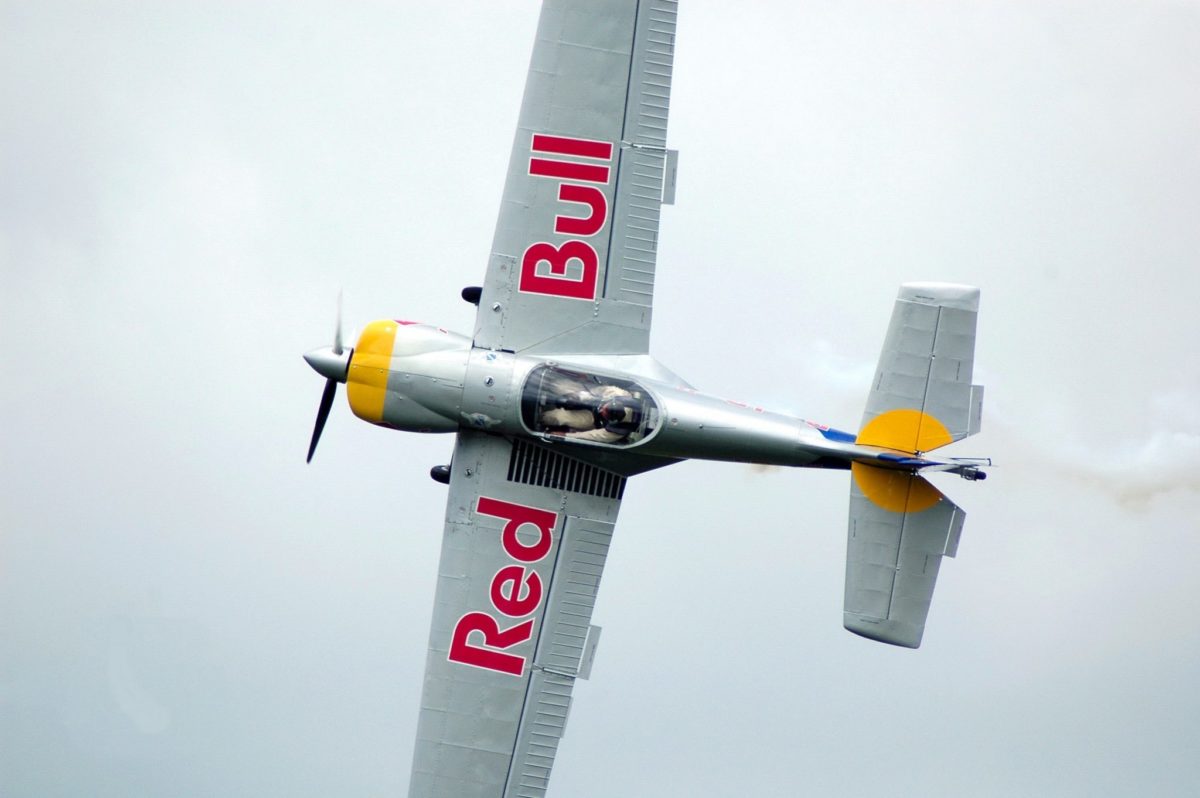
The way a brand positions itself and the messaging that it communicates can be the difference between success and failure of the business. This is why having a solid digital strategy in place in 2019 should be a priority of any business. Brands are benefiting almost as much from the digital revolution as consumers are, as new digital platforms and technologies allow a lot more opportunities. There are more channels available now than ever before that allow enhanced exposure and the built to engage with and build a closer relationship with consumers. It is important for brands to be as innovative as possible when it comes to creating a digital marketing strategy as it is no longer enough for brands to follow trends – success means being one step ahead. One brand that is particularly good at staying ahead of trends and using its digital marketing strategy to create a personality that its audience and target market can relate to is Red Bull. Red Bull has been innovative since the start of its journey, promoting a way of life, not just a product. Its brand identity of being both stimulating and reviving is fully reflected in its digital strategy and promotes a trendy and modish image. Even the Red Bull logo incorporates the brand’s identity and image – the red represents passion and lust, whilst blue is the colour of strength, confidence and youth. Read on the find out more about how Red Bull puts its brand at the heart of its digital strategy.
Video content
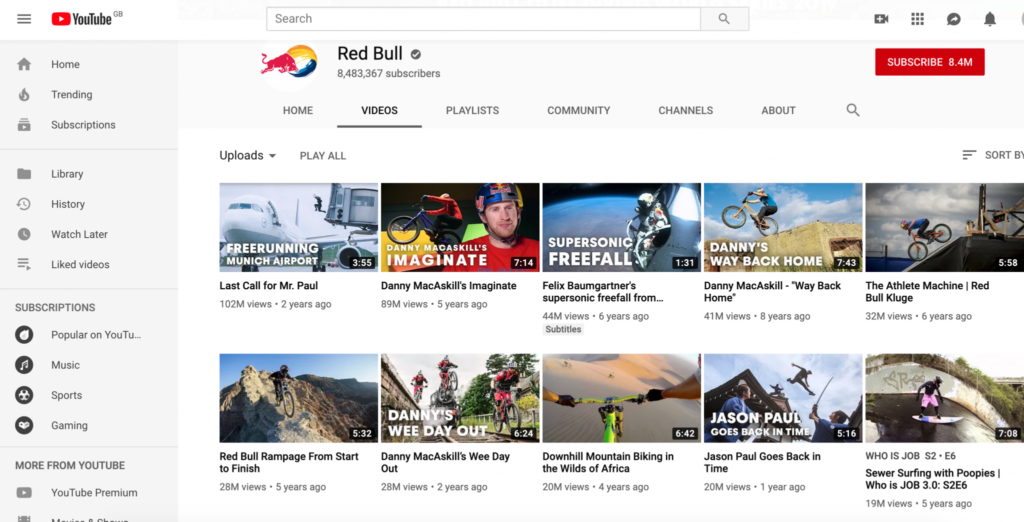
It personifies the brand
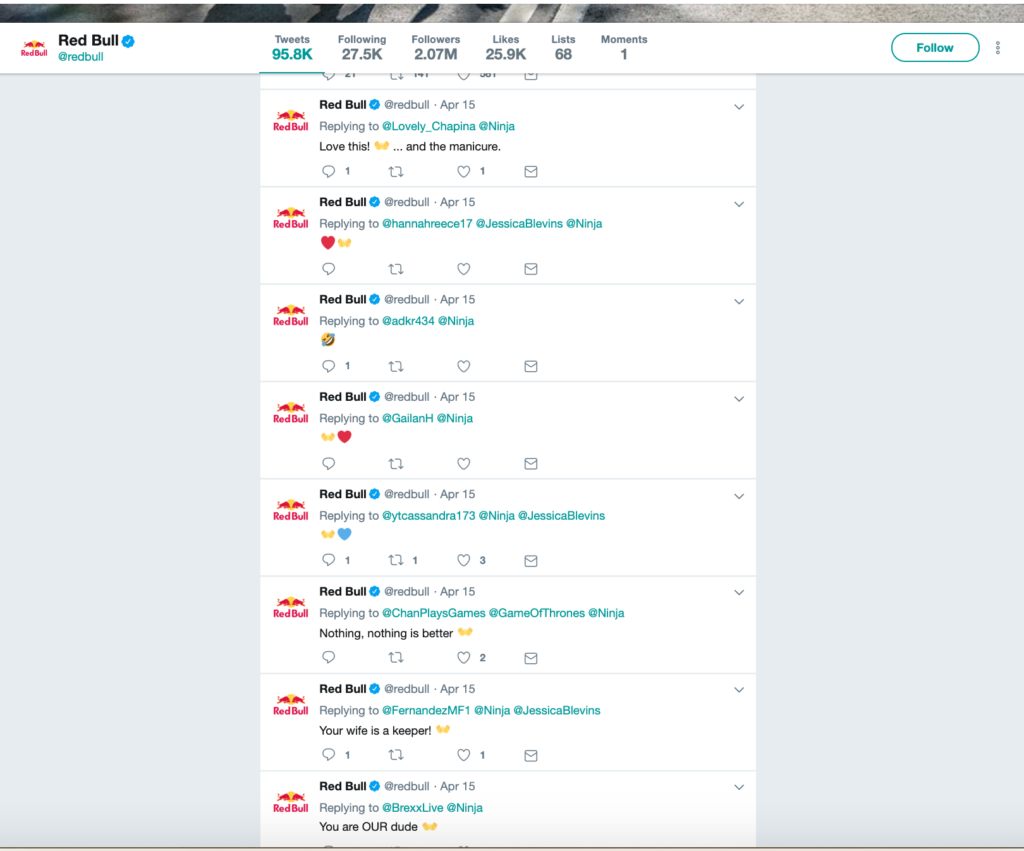
Consistent visual branding and tone of voice
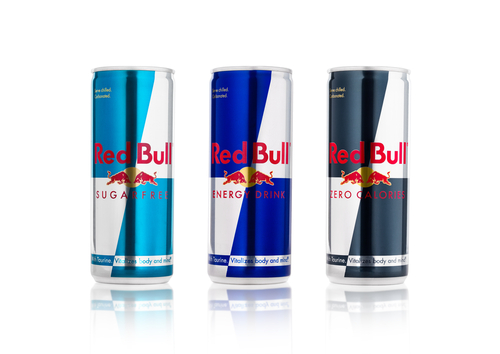

Red Bull are innovators
Have you just learned something new.
Then join the 80,000 people who read our expert articles every month.
- First name *
- Last name *
- Email address *
By signing up to this form I agree, that Hallam may store my data and may contact me using the email address I have provided with promotional emails about products, special offers, and other information which may be of interest. Please also read our privacy policy . You can revoke your consent at any time
- Name This field is for validation purposes and should be left unchanged.
Get content like this in your inbox, weekly.
More trending content.

Content Marketing
Why content marketing is crucial to your digital strategy

The future of digital marketing: 2019 and beyond


Energizing the Brand: Red Bull’s Marketing Journey From 1987 to 2023
##article.authors##.
This research paper provides an in-depth examination of Red Bull's pioneering marketing strategies that have cemented its status in the energy drink industry. Renowned for its ties to adrenaline-fueled sports and a distinctive brand image, Red Bull's rise in the beverage industry has been supported by its creative marketing mix that extends beyond the traditional Four P’s framework (Product, Price, Place and Promotion). The company's marketing approach focuses on captivating content and experiential customer engagement, complemented by its adoption of unconventional guerrilla marketing techniques. This study examines key consumer behavior elements to understand the brand's successful audience engagement. Meanwhile, the paper also discusses challenges and criticisms that Red Bull has confronted and addresses those issues by proposing consumer education initiatives to reshape public perception, emphasizing the need to adapt to emerging trends in sustainability and enhanced ethically conscious strategies for target audiences. The sources attributed in this paper include interviews with Red Bull executives, consumer surveys, and a review of academic and industry literature, providing a holistic view of the brand’s dynamic marketing evolution.
References or Bibliography
A Deep Dive into Red Bull Marketing Strategy and How it Dominates the Energy Drink Industry. (n.d.). Buildd.co Website. https://buildd.co/marketing/redbull-marketing-strategy
Boyd, M., Han A., Coelho, C., Posso F. D., & DeVos, P. (n.d.). Red Bull Marketing Research Project. The University of North Carolina at Chapel Hill. http://millergboyd.com/wp-content/uploads/2020/11/Red-Bull-Marketing-Research-Project_Offical-Copy.pdf
Brown, K. (2013), Selling Energy: An Analysis of Red Bull’s Marketing Strategy. Bachelor of Commerce Best Business Research Paper, Volume 7, University of Victoria pp 4-12. https://www.uvic.ca/gustavson/assets/docs/Research/student-research-engagement/COM-470-Best-Business-Research-Papers-Vol7.pdf#page=4
Energy Drink Trends: What To Expect in 2023. (2023).Glanbia Nutritionals Website. https://www.glanbianutritionals.com/en/nutri-knowledge-center/insights/energy-drink-trends-what-expect
Feber D., Granskog A., Lingqvist O., Nordigarden D. (2022). Sustainability in Packaging: Inside Minds of US Consumers. McKinsey & Company. https://www.mckinsey.com/industries/packaging-and-paper/our-insights/sustainability-in-packaging-inside-the-minds-of-us-consumers#/
Fox, Meimei (2022). 6 Brands Dominating The Explosive Functional Beverages Market. Forbes. https://www.forbes.com/sites/meimeifox/2022/03/26/6-brands-dominating-the-explosive-functional-beverages-market/?sh=64924f5451cf
Gierlach, A. C. (2022). Energy drinks in Germany – a study about consumers, perceptions, drivers and barriers of consumption. Universidade Católica Portuguesa. Microsoft Word - AlannahGierlachDissertation.docx (ucp.pt)
Gough C. (2023). The Buzz on Energy Drinks and Their Growing Sway with Kids. Your Teen For Parents Website. https://yourteenmag.com/health/energy-drinks-and-teens
How the Red Bull Media House Takes Extraordinary Stories Global. 2018. FIPP Website
https://www.fipp.com/news/how-red-bull-media-house-takes-extraordinary-stories-global/#
Kantoglu D. (2019). Red Bull Gives You Wings: Red Bull Winning Marketing Strategies. LinkedIn. https://www.linkedin.com/pulse/red-bull-gives-you-wings-bulls-winning-marketing-dogukan-kantoglu/
Market Share of the Leading Energy Drink Brands in the United States in 2023. (2023). Statista Website. https://www.statista.com/statistics/306864/market-share-of-leading-energy-drink-brands-in-the-us-based-on-case-volume-sales/#statisticContainer
Moore K. (2022). Red Bull’s Approach to Marketing, Then and Now. BANKNOTES. https://hashtagpaid.com/banknotes/red-bulls-approach-to-marketing-then-and-now
Nystrom & Karin. (2022). The Importance of Customer-Based Brand Equity and Brand Loyalty in Building Strong Brands: How Red Bull Utilized Brand Extension into the Sports Industry in Their Brand Building. Aalto University Learning Center. https://aaltodoc.aalto.fi/handle/123456789/114221
Red Bull’s Target Audience: Unveiling the Key Demographic. (2023). Opener.co Website. https://openr.co/red-bulls-target-audience-unveiling-the-key-demographic/
Red Bull SWOT Analysis.(n.d.). The Strategy Story Website. https://thestrategystory.com/blog/red-bull-swot-analysis/
Tas G. (2023). Red Bull Marketing Strategy: How They Make the Difference? Digital Agency Network. https://digitalagencynetwork.com/red-bull-marketing-strategy-how-they-make-the-difference/
Urrutia, K. (2023). Energizing Success through Innovation and Lifestyle Branding. Voymedia Website. https://voymedia.com/red-bull-marketing-strategy/
Vogel,C., Shaw, S., Strömmer S., Crozier, S., Jenner S., Cooper,C., … Barker, M. (2022). Inequalities in energy drink consumption among UK adolescents: a mixed-methods study. Public Health Nutrition: 26(3), 575–585. DOI:10.1017/S1368980022002592
Weiss, J. (2018) How Red Bull Became One of the Most Respected Brands in Music. Forbes. https://www.forbes.com/sites/passionoftheweiss/2018/06/27/red-bull-music/?sh=39b5a25d4439
Copyright (c) 2023 Andrew Pan

This work is licensed under a Creative Commons Attribution-NonCommercial-NoDerivatives 4.0 International License .
The copyright holder(s) for this article has granted JSR.org a license to display the article in perpetuity.
Browse Categories


- About Us Discover how Segmentify empowers marketers for growth.
- Contact We'd love to help. Please let us know how we can assist you!
- Partners Our global partner network provides you with local knowledge.
- Blog Get inspired, follow up the latest trends and best practices!
- Success Stories See real-life uses of Segmentify narrated by our happy customers.
- Glossary Discover all terms related to the eCommerce
Get a free demo
Discover Your Growth Strategy
See Segmentify in Action
Shortly after you submit the form, one of our team will contact you to organise a time for your demo. Thank you!
Written by Cansu Dilek
03 August 2022
How to Get Wings: Red Bull’s Accelerating Marketing Strategies
Red Bull is an energy drink, but have you ever wondered why Red Bull is so involved in sports, especially Formula 1?
Even if you haven’t tasted the energy drink that gives you wings, Red Bull, you have definitely heard of it because of their memorable slogan, F1 cars or something else. Red Bull’s marketing strategies are a success story of making a specific drink well-known, especially among young people. The brand spends 84% of its profits on marketing. According to data from 2011, Red Bull, which spends 2.1 billion dollars a year only for marketing, invests in extreme sports all over the world.
Let’s get on with the history and marketing strategies of Red Bull and its founder Dietrich Mateschitz!
A Brief History of Red Bull
Red bull is an Austrian company mainly focused on energy drinks. It was founded in 1984 and is also known for sponsoring sports events such as auto racing, American football, ice hockey and esports.
The company was founded by Dietrich Mateschitz, an ex-toothpaste salesman. The young entrepreneur also had experience in selling washing-up liquid and soap. It took him 10 years to get a marketing degree in Austria at the age of 28. But that’s not the most surprising part of the story!
The surprising part was that Red Bull was actually an energy drink sold in Thailand. In addition, unlike Coca-Cola, Red Bull’s content was not patented. All the contents were listed on the side of the box. In other words, this entrepreneur turned an ordinary beverage into a billion-dollar brand!
So how did he discover this beverage business that changed his whole life? During a business trip to Thailand in 1982, he learned from a local toothpaste dealer, who would become his future partner, that energy drinks are very popular with people who need to stay awake at night. After trying this beverage, Dietrich was relieved entirely from the jet lag of his long flight.
Since he always expected more and more from life, he thought about starting his own business from the moment he tried and loved this beverage. He quit his job at the age of 40 and partnered with his local toothpaste dealer. The two partners invested $500,000 in this beverage business.
The Hard Part
Despite this, his journey to becoming an entrepreneur has not been as smooth as he had expected. Dietrich tried to apply for a licence to sell high-energy drinks in Austria, but after three years of effort and numerous phone sales calls, he was only able to obtain the sales licence.
Moreover, the initial market research results were not promising. People did not like the taste of the drink and thought it was too sweet. After losing millions of dollars in 2 years, he fully believed that the company would still be successful. Dietrich financed everything without borrowing any money. He eventually realised that the Austrian market was not big enough for the company to grow. He decided to expand the company to Hungary, Germany and England.
Word of Mouth Marketing
After these difficult times, the company did not have enough money to spend on advertising. For this reason, Dietrich learned that only word-of-mouth marketing could increase sales. He recruited students to drive vehicles with a giant Red Bull can attached to them. He asked them to roam around college campuses, giving free samples to parties and bars.
Red Bull has also sponsored special and exciting events that received great media attention worldwide. It supported 500 extreme athletes competing in special and often record-breaking events.
So far, his strategy seems to be working fine. The energy drink company has a market share of 70-90% in more than 100 countries. Red Bull dominated 47% of the energy drink market in the United States in 2005. Another astonishing thing is that the company has only about 1800 employees worldwide with sales of about one million dollars per person. Not bad for a $1.6 billion worth company.
Dietrich is the only Austrian billionaire with a net worth of $26 billion, ranking 37th on Forbes’ 2018 World Billionaires list. He is an extraordinary entrepreneur who gets rich without inventing a new product but by selling something simple with creativity. I love this quote by him:
“ The market only exists if we create it; otherwise, it does not exist. ” Red Bull is a genuine brand with soul, history and essence.
Sports that Red Bull is Involved In
Red Bull is involved in 8 different sports and has invested in over 15 sports teams .
- FC Red Bull Salzburg
- New York Red Bulls
- Red Bull Brasil
- FC Liefering
- Red Bull Racing
- Scuderia Toro Rosso
- Team Peugeot-Hansen
- EKS Audi Sport
- Red Bull KTM Factory Racing
- Red Bull KTM Tech 3
- Red Bull KTM Ajo
- EC Red Bull Salzburg
- EHC Red Bull Munchen
- Red Bull Extreme Sailing Team
- Red Bull Skate Team
- Red Bull Surfing Team
What is Formula 1?
The top division of open-wheel, single-seater Formula One racing, usually referred to as Formula One or F1, is authorised by the Fédération Internationale de l’Automobile (FIA). The name’s use of the word “formula” alludes to the set of requirements that all participants’ automobiles must meet.
Grands Prix, a collection of events that make up a Formula One season, are held worldwide on closed public roads and purpose-built racing tracks. The number of Grands Prix held in a season has fluctuated over the years. The 2000s saw an increase in Grands Prix, and subsequent seasons have averaged 19 events. The calendar reached its apex in 2021 and 2022 with 22 events, the most world championships ever.
There are 10 teams and 20 drivers in Formula One. Teams are; 1. Red Bull Racing, 2. Ferrari, 3. Mercedes, 4. McLaren, 5. Alpine, 6. Alfa Romeo, 7. Haas F1 Team, 8. Alpha Tauri, 9. Aston Martin, 10. Williams.
Red Bull and Formula 1
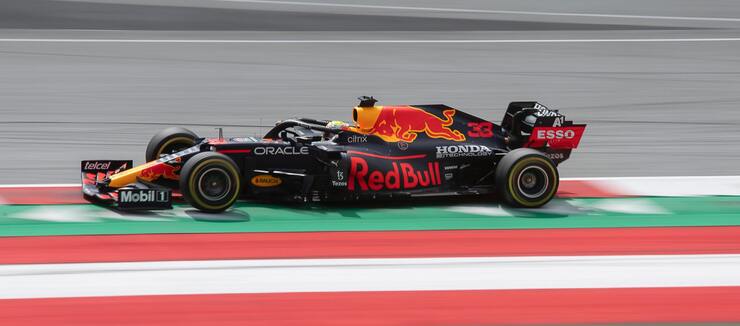
Red Bull had previously participated in Formula One as a sponsor before fully joining as a works team in 2004. Nevertheless, their level of accomplishment during the ensuing ten years was astounding.
After finishing on the podium for the first time in 2006, the team found its groove in 2009, winning six races and placing second in the constructors’ standings. They were a powerhouse over the following four seasons, winning back-to-back championships between 2010 and 2013, with Sebastian Vettel becoming the sport’s youngest quadruple winner. Currently, Max Verstappen and Sergio Perez are the race drivers to represent Red Bull racing.
Marketing Genius: Founder of Red Bull and His Branding Strategies
1. create a global brand name.
Red Bull became a market founder and pioneer for the energy drink market that did not exist prior to Red Bull. As of now, Red Bull owns 43% of the market share in the energy drink industry. As an Austrian brand, it was first named Leidseplein Beheer , and the name was later changed to Red Bull. The main reason for this change was because the original name was German and was hard for non-German-speaking people to pronounce.
Red Bull really does look like a product from a global economy. It’s not like a traditional American soft drink. It’s not sold in a 12-ounce can, it’s not a bottle, and there’s no script. It’s just like Pepsi or Coca-Cola. It looks like it’s made in Europe. However, it seems certain that Red Bull’s consistent packaging has helped globalise this brand.
2. Target the Right Group
Red Bull changed their target group to the youth. The places where Red Bull concentrated its strategies were university campuses and nightclubs. Red Bull has its car on university campuses, in addition to sponsoring major and minor high school and university events. This makes the brand position itself as a drink for the youth.
3. Position the Brand as “Cool”
In its early days, Red Bull did not have enough resources to fund proper marketing campaigns. Therefore, its most effective strategy was word-of-mouth marketing. Red Bull partnered with “cool” university students to promote their drink. Furthermore, by sponsoring extreme sports events, its brand identification has become a drink that cool people drink.
4. Identify the Red Bull Brand with Extreme Sports
As previously mentioned, Red Bull sponsors over 15 sports teams through 11 extreme sports. This strategy is no coincidence; Red Bull aims to be seen as a brand that sports lovers would use. Red Bull’s social media accounts mostly post about extreme sports rather than the energy drink itself. Red Bull’s youtube account has over 10 million followers and posts videos about sports events and its sports teams.
5. Have Brand Musketeers
Dietrich decided to market this product as a lifestyle and turned to the youth. For this, they started with the parties. To reach the youth, they gave the most popular kids at the school Mini Coopers and Volkswagen Beetles, making them “brand representatives”.
These students played an important role in spreading the brand by organising large parties. Of course, creating cocktails by mixing many drinks with Red Bull also helped Red Bull grow at that time.
Red Bull sold more than 1 million copies a year in 1987 and later expanded to Croatia, Slovakia, Germany and England. Now, Red Bull is widely used in cocktail mixing and is offered by many bars and clubs.
6. The Franchise System
Red Bull works with the franchise system. Every franchise has a CEO and marketing team. Although each region seems to be autonomous, strong controls are made from the headquarters. The single-brand distribution network has been a critical factor in its success. It also has other firms to develop and market beverages, such as the water brand LuAqua and the Red Bull sugar-free format.
Franchise managers attend the training and development programs by the HR department at the company’s headquarters. In addition, the performance management team at the headquarters also contributes to the evaluation of employees. The company’s HR team and structure are solid. Thus, it has been an essential factor in their success thus far.
7. Memorable Catchphrases: “Red Bull Gives You Wings”
Having a professional pilot licence, Dietrich still organises this fun event worldwide by organising flight day events, emphasising Red Bull’s well-known catchphrase, “ Red Bull gives you wings ”. With this tagline, Red Bull aims to show that the brand’s name equals excitement.
Corporate social responsibility studies are one of the critical areas where brands present their sensitivity to the problems of the society in which they operate and offer solutions, along with their own activities.
An example is the World Run , which Red Bull organises annually through the Wings For Life Foundation , which aims to raise funds for treating spinal cord paralysis. An important resource is created for the relevant fund at the event held in Izmir every year in May. The fact that this event is organised on the same day in all the countries it is held gives it international importance.
Wrapping Up
To conclude, Red Bull is perhaps one of the most successful brand marketing companies. Red Bull’s founder is considered a genius in brand marketing. Its strategies include:
- Reforming the brand with a global name
- Targeting an audience of the youth
- Positioning itself as a brand that young, cool, and sports lovers use.
The franchise system has also helped Red Bull grow rapidly. Currently, Red Bull holds 43% of the market share in the energy drink industry.
At Segmentify, we are committed to providing the highest quality marketing tools to our eCommerce customers. As seen in the Red Bull example, your product does not have to be the most common product for your company to be well-known. Excellent marketing strategies will help your brand grow. With our free trial, eCommerce stores can try our solutions and see the difference!
Marketing Know-How
Become a better marketer with Segmentify's weekly newsletter!
You may also like

How to Create a Brand like Rihanna: Fenty Beauty’s Growth Strategy
Rihanna has always stunned us with her songs, iconic hairstyles, and fashion sense. Now added to the list are her brands, Fenty Beauty and Savage X Fenty. The launch of Fenty Beauty created a hu...

8 Great Marketing Lessons from 8 Great Tennis Players
Tennis is a worldwide sport popular among male and female players and audiences. With their success as athletes and commercial triumphs in creating their brand, let’s discuss how professional tennis...

10 Marketing Lessons That We Learned From Taylor Swift
Number 8 on Billboard’s Greatest Artists of All Time alongside music legends such as The Beatles, Mariah Carey, Madonna, Michael Jackson, etc. Taylor Swift is the youngest artist on the list wit...
Our website uses cookies
Our websites use cookies. By continuing, we assume your permission to deploy cookies as detailed in our Privacy Policy.
Request a Demo
Learn how we use your personal data in our privacy policy and about our country/region options
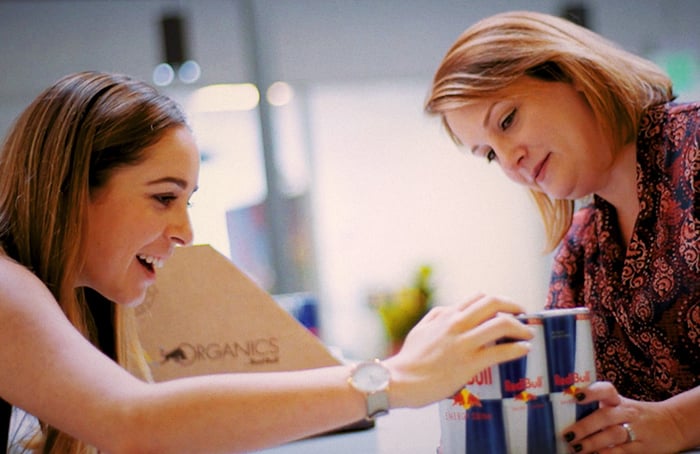
Customer Experience
Leading the business: Lessons from Red Bull’s Shopper Insights team
Written by Alida
Published September 20, 2018
From strategic planning to brand positioning, customer insights have the potential to inform business decisions across the organization. For example, shopper insights can help retailers plan their ideal product mix, while product usage data can help companies design better products . Despite this impact, market research teams are sometimes viewed as service providers rather than strategic partners. This is problematic for companies because it means they make many decisions based on gut feeling rather than customer-validated insights.
To make the switch to strategic partner, research teams need to gather and deliver high-quality insights to their stakeholders quickly. The Shopper Insights team at Red Bull knows this all too well. Laura-Lynn Freck, director of shopper insights, and Sarah Shain, shopper insights analyst, presented at our Customer Intelligence Summit and shared how their shopper insights team earned the right to lead their organization. Here are the highlights.
Earning the right to lead
To be most effective, research teams need to engage both their customers and their stakeholders. This means providing the customer with an enjoyable research experience, while delivering value to internal stakeholders. Laura-Lynn and Sarah talked about how you can’t have one without the other, and provided these tips to help you achieve both.
1. Understand the business context.
If you want to be a strategic partner, you need to look outside your own four walls and understand what’s happening with the business, including its biggest challenges. The Red Bull team was challenged with keeping up with the dynamic retail landscape. They needed to get a better handle on the shopper journey, as well as set their brand apart from the rising competition.
They also wanted to be known as a valuable resource to their retail partners. Finally, they had to engage a community that wasn’t just focused on their brand, but on the energy drink category as a whole. With a clear understanding of the obstacles the company faced, the team was better prepared to tackle these issues strategically.
2. Cultivate customer engagement.
The team at Red Bull delivers timely insight to stakeholders because their community members actively provide them with regular feedback. Although there are many ways to keep your community engaged, the Shopper Insights team has been successful because they truly understand their community members, and know what resonates most with them.
Here are some ways the team keeps their community engaged:
Deliver a great research experience. Keep your surveys fun and short so people will want to respond. For example, where possible, Red Bull sends out quick two-question surveys accompanied by images with quirky messages to keep it lighthearted.
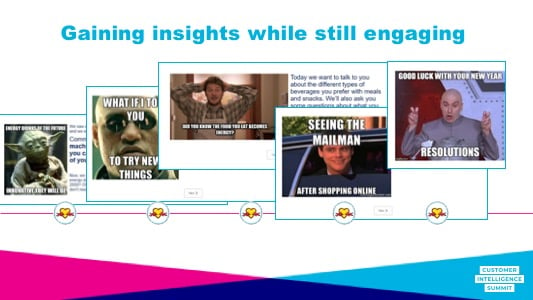
Go beyond monetary incentives. Sometimes offering free products can motivate people to participate, but many times incentives aren’t necessary. Red Bull’s energy drink community loves energy drinks so much, they’re willing to participate without getting financial rewards in return.
3. Focus on speed.
Business moves fast, and the Red Bull team knew they had to keep up. That’s why they’ve created a community of highly-engaged, opted-in consumers who can get them reliable insights in the blink of an eye. In turn, the team can quickly deliver insight to stakeholders when they need them.
One lesson the Shopper Insights team learned is to take a broad lens on insight rather than trying to get as much data as you can around one topic. Not only will this help you distribute insight more quickly, but with a wider view, those insights will be relevant to more stakeholders across the company.
4. Tell a compelling story.
Don’t just share data. Tell a great story around it by consolidating your data points around one business problem, and then offering three key points and evidence to support it. Build on what your audience already knows and share insights in bite-sized pieces like stats, snippets and illustrations.
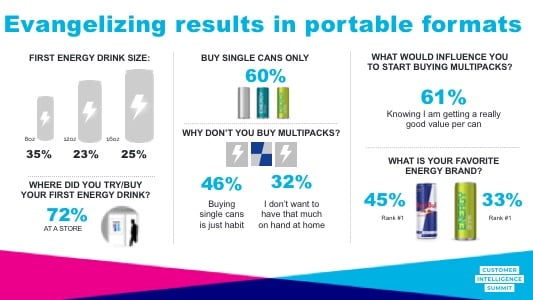
From service provider to strategic partner
With customer insight informing so many important decisions throughout the company, market research teams can no longer settle for working behind the scenes. By positioning your team as a strategic partner, you can earn the right to lead your organization, just as the Red Bull Shopper Insights team did. For more details on best practices and community impact, please watch Red Bull’s video story .

Related Posts

What's the Difference between Customer Centric vs. Customer Focused?

4 CX Trends for 2024: Your Guide to Navigating the Year Ahead

3 key takeaways from Innovation Day to carry into 2024

Uncover Measurable ROI with Insight Communities

Alida’s Fall ‘23 release provides faster speed to insights and scalability, powered by AI.
Oracle and Red Bull Racing Are Redefining Fan Experiences
Using customer data can help marketers develop unique ways to engage with their audiences.

Inspiration meets innovation at Brandweek , the ultimate marketing experience. Join industry luminaries, rising talent and strategic experts in Phoenix, Arizona this September 23–26 to assess challenges, develop solutions and create new pathways for growth. Register early to save .
At a time when customer experience is everything, the overwhelming majority of marketers and sellers believe CRM is still broken. Red Bull Racing Honda tackled this challenge by focusing on unrivaled fan engagement in the physical and digital worlds. Oracle’s CMO Ariel Kelman and Red Bull Racing Honda’s CMO Oliver Hughes took the virtual stage at Brandweek for a candid conversation about how the two teamed up to re-engineer the ultimate fan experience.
The race to improved CX
Aiming to reinvent the Formula One fan experience, Hughes knew changes were needed to ensure the Red Bull Racing Honda fanbase felt as connected as possible without even needing to attend races in person.
“When I joined the team, connecting with our fan base was very basic—maybe an email newsletter that everyone got … I got quite frustrated early on, wondering, ‘Is this all we’re doing?’ ‘Is this the best we can do for our fans?’”
Hughes and his team partnered with Oracle to accelerate the mission for improved CX by leveraging Oracle’s machine learning and data capabilities to optimize the way data is used, from on-track activities to putting more information in the hands of Red Bull Racing’s global fanbase.
“We wanted to put the right technology in place so that instead of just talking to [the customer] the same as I’d talk to my next-door neighbor or a kid in Brazil, we could learn how to use technology to find out what is the experience that actually makes each customer watch more, and engage more,” he said.
Engaging with consumers in unique and compelling ways
Red Bull Honda’s digital transformation journey is about understanding the fanbase better and connecting with them in a way that improves and adds to their F1 experience.
“As with a lot of conversations in marketing , it often starts with data,” said Kelman. “So, being able to interpret and utilize data. My biggest takeaway over and over again tends to be ‘you can’t over-invest in having a really strong, clean, and comprehensive customer database.’ It’s really the foundation for everything.”
Using that customer data can help marketers develop unique, compelling and personalized ways to engage with their audiences to create great fan experiences.
“The outcome from a great fan experience is increased revenue. It’s not just ‘I want to know who you are so I can sell what I know about you.’ It’s more ‘I want to know who you are so I can enrich your experience, and by enriching your experience, hopefully, you want to buy more merchandise or engage with our partners differently,’” said Hughes.
Hughes says he’s looking forward to propelling the company’s mission to connect with fans deeper and in more meaningful ways than ever.
“We can now make every engagement dynamic and enable everybody to have an experience which is right for them, not just the lowest common denominator; everyone gets the same,” he explained.

Reimagining Brand Loyalty and Value in the Digital Age With Petco’s Tariq Hassan
Alexandra Bower
- @alexandra_cc1
Alexandra Bower is a freelance writer for Adweek.


Red Bull Segmentation, Targeting and Positioning
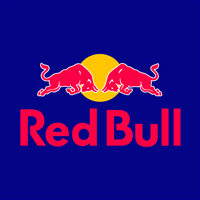
Segmentation involves dividing population into groups according to certain characteristics, whereas targeting implies choosing specific groups identified as a result of segmentation to sell products. Positioning refers to the selection of the marketing mix the most suitable for the target customer segment.
Red Bull uses mono-segment type of positioning and accordingly, the company appeals to the wants and needs of a single customer segment. Red Bull target customer segment represent busy individuals who are overly active in their personal and professional lives and who have are fascinated by extreme sports.
The following table illustrates Red Bull segmentation, targeting and positioning:
Red Bull segmentation, targeting and positioning
Red Bull GmbH Report constitutes a comprehensive analysis of marketing strategy and business strategy of Red Bull. The report illustrates the application of the major analytical strategic frameworks in business studies such as SWOT, PESTEL, Porter’s Five Forces, Value Chain analysis and McKinsey 7S Model on Red Bull . Moreover, the report contains analysis of Red Bull ’s leadership and organizational structure and discusses the issues of corporate social responsibility.

[1] According to Cross Cultural Consumer Characterization by Young & Rubican
- Skip to content
- Accessibility Policy
- Oracle blogs
- Lorem ipsum dolor
The latest in CX strategy, technology, and innovation
- Data Utilization & Analytics ,
- Customer Experience Strategy ,
3 ways Oracle Red Bull Racing crafts the ultimate customer experience
What’s the ultimate customer experience for today’s sports fans? What does it take to create the perfect day-of environment, one that will keep fans coming back for more?
We all have our stories of a bad customer experience: Wait to buy a ticket, wait in line to get in, wait again for bad seats, and wait yet again to get out and go home. But my trip to Austin couldn’t have been more different.
This event offered a unique fan experience driven by customer preference and behavior, ranging from the social media posts you’ve “liked” to the jerseys and merch bought along the way to your seats.
During the event, four-time Formula 1 World Champion Oracle Red Bull Racing offered fans exclusive behind-the-scenes access to the exciting event via The Oracle Red Bull Racing Paddock , the brand’s all-new, free loyalty program. Fans can earn points through engaging with the team and then trade them for perks like digital downloads, autographed merchandise, and even VIP experiences. It was fun to see how such personalized fan interactions contributed to the excitement around the event—even before the team ultimately took home the win.
Here are just a few of the strategies I gathered along the way for creating the ultimate customer experience:
1. Really get to know your fans to help shape your ideal customer experience.
“Who are our fans? Where are they located? How many t-shirts do they buy? How many races do they watch?”
These are just some of the questions asked by motorsport marketing teams looking to build customer loyalty within their fanbase. Today’s sports brands, like Oracle Red Bull Racing, need effective technology in-house to get to know their fans are and what they care about.
Enter The Oracle Red Bull Racing Paddock , a one-of-a-kind loyalty program within Formula 1 racing. The Paddock delivers a unique experience to each fan to bring them closer than ever to the race action and make them feel like they’re truly a member of the Oracle Red Bull Racing team.
Using Oracle CrowdTwist Loyalty and Engagement , The Paddock rewards fans for both their in-person and digital interactions with the Oracle Red Bull Racing team with perks and experiences that money simply can’t buy.
While at the USGP, I signed up for The Paddock and instantly gained access to exclusive videos and team content. It was a pleasure to see firsthand how Oracle plays a key role in helping brands create agile, interactive fan experiences.
2. Align with the best technology partners to help you meet your goals.
Finding the right technology partner is crucial in racing to the finish line of first-class fan experiences. Do you currently have the right technology partner that could help you reach what your business is trying to achieve? This was one of the key questions raised by Oracle Red Bull Racing CMO Oliver Hughes during our executive events surrounding the event.
At Oracle, we ask what you need and deliver a passionate team to help you implement the best tools to meet those needs and the needs of your customers (or fans). In addition to helping Oracle Red Bull Racing achieve ambitious marketing goals, our team also helps from a resource perspective, seconding consultants from Oracle to become extensions of the in-house team. We’re also able to share learnings and best practices from other Oracle customers like The Premiere League and the NFL .
3. Collect and use the right customer data to fuel personalized customer experiences.
Custom-designed marketing cloud technology, such as The Oracle Red Bull Racing Paddock, can help you automate marketing activities like fan engagement and content management, campaign execution, website tracking, measurement, and reporting alongside learning more about what the team’s fans love—all capabilities that play the most crucial roles in creating fan affinity with today’s sports and entertainment brands.
Going forward, I’m very much looking forward to interacting with The Paddock to see how personalization will play into future fan experiences.
What an experience!
Along with more than 440,000 other fans, I was able to truly immerse myself in a sporting event with one of the most passionate fan bases in the world.
These fans roared and cheered as the drivers laid their lives on the line for a podium win. The visceral feeling of seeing the F1 racecars zoom by fans at 190 mph is forever cemented in my memory and has opened a new world for me.
And I love that Oracle can be part of fueling the action as part of a top-notch loyalty program that creates excitement, builds deeper customer relationships, and offers engaging customer experiences for fans just like me.
Watch how Oracle Advertising and CX and Oracle Red Bull Racing team up to deliver unrivaled customer experiences and bring fans closer to the race––all through personalization and real-time engagement.
Jose-Andres Camacho
Social media manager, oracle advertising and cx.
Jose-Andres Camacho is a social media manager for Oracle Advertising and Customer Experience. He has over five years of experience in social media marketing for B2B and B2C Fortune 500 technology brands.
What’s the ultimate customer experience for today’s sports fans? What does it take to create the perfect day-of environment, one that will keep fans coming back for more?
We all have our stories of a bad customer experience: Wait to buy a ticket, wait in line to get in, wait again for bad seats, and wait yet again to get out and go home. But my trip to Austin couldn’t have been more different.
This event offered a unique fan experience driven by customer preference and behavior, ranging from the social media posts you’ve “liked” to the jerseys and merch bought along the way to your seats.
During the event, four-time Formula 1 World Champion Oracle Red Bull Racing offered fans exclusive behind-the-scenes access to the exciting event via The Oracle Red Bull Racing Paddock , the brand’s all-new, free loyalty program. Fans can earn points through engaging with the team and then trade them for perks like digital downloads, autographed merchandise, and even VIP experiences. It was fun to see how such personalized fan interactions contributed to the excitement around the event—even before the team ultimately took home the win.
“Who are our fans? Where are they located? How many t-shirts do they buy? How many races do they watch?”
These are just some of the questions asked by motorsport marketing teams looking to build customer loyalty within their fanbase. Today’s sports brands, like Oracle Red Bull Racing, need effective technology in-house to get to know their fans are and what they care about.
Enter The Oracle Red Bull Racing Paddock , a one-of-a-kind loyalty program within Formula 1 racing. The Paddock delivers a unique experience to each fan to bring them closer than ever to the race action and make them feel like they’re truly a member of the Oracle Red Bull Racing team.
Using Oracle CrowdTwist Loyalty and Engagement , The Paddock rewards fans for both their in-person and digital interactions with the Oracle Red Bull Racing team with perks and experiences that money simply can’t buy.
At Oracle, we ask what you need and deliver a passionate team to help you implement the best tools to meet those needs and the needs of your customers (or fans). In addition to helping Oracle Red Bull Racing achieve ambitious marketing goals, our team also helps from a resource perspective, seconding consultants from Oracle to become extensions of the in-house team. We’re also able to share learnings and best practices from other Oracle customers like The Premiere League and the NFL .
Custom-designed marketing cloud technology, such as The Oracle Red Bull Racing Paddock, can help you automate marketing activities like fan engagement and content management, campaign execution, website tracking, measurement, and reporting alongside learning more about what the team’s fans love—all capabilities that play the most crucial roles in creating fan affinity with today’s sports and entertainment brands.
Going forward, I’m very much looking forward to interacting with The Paddock to see how personalization will play into future fan experiences.
Watch how Oracle Advertising and CX and Oracle Red Bull Racing team up to deliver unrivaled customer experiences and bring fans closer to the race––all through personalization and real-time engagement.
Previous Post
3 customer service best practices that help build customer loyalty
Markies mondays: convert transactional customers into brand loyalists with ecommerce excellence, resources for.
- Analyst Reports
- Cloud Economics
- Corporate Responsibility
- Diversity and Inclusion
- Security Practices
- What is Customer Service?
- What is ERP?
- What is Marketing Automation?
- What is Procurement?
- What is Talent Management?
- What is VM?
- Try Oracle Cloud Free Tier
- Oracle Sustainability
- Oracle COVID-19 Response
- Oracle and SailGP
- Oracle and Premier League
- Oracle and Red Bull Racing Honda
- US Sales 1.800.633.0738
- How can we help?
- Subscribe to Oracle Content
- © 2022 Oracle
- Privacy / Do Not Sell My Info
- Customer First
- Data Consulting
- Customer Strategy & Insights
- Customer Engagement
- Category Management
- Price & Promotions
- Insight Monetisation & CPG Collaboration
- Retail Media
- Shopper Insights
- Retail Media & Audience Targeting
- Our Clients
- Case Studies
- All Resources
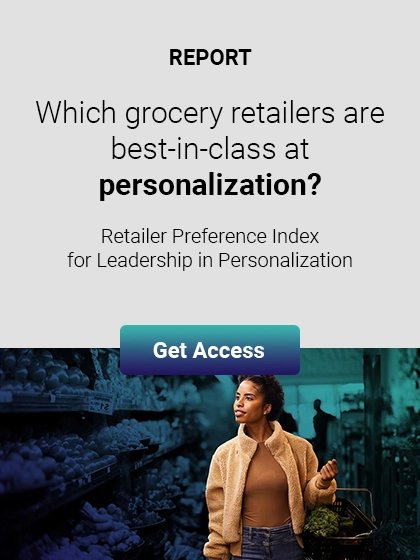
- Our Company
- Our Science
- Sectors we serve
- dunnhumby Ventures
- Early Careers
- Experienced Careers
- dunnhumby Life
- Alumni Network
Find out how embedding Customer Data Science in assortment decisions let to 54% cross-shopping growth.
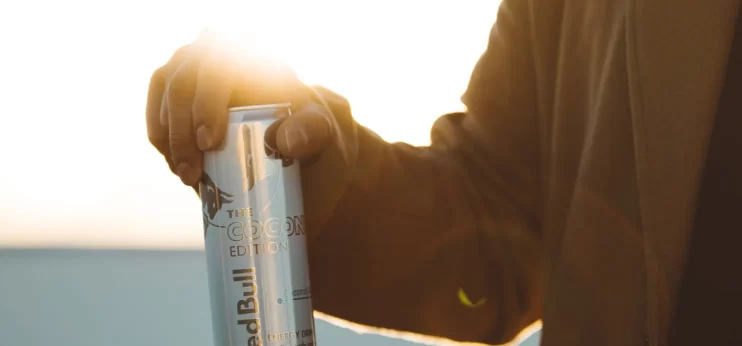
to 31.9% growth in the Energy Drinks category across three test regions
to 54% growth in customer cross-shopping
Back in 1987, Red Bull not only launched a completely innovative product, it created a whole new product category – Energy Drinks. Since then, Red Bull’s approach to deliver the best product on the market is to put the customer at the heart of every decision, but to do so, a thorough understanding of the customer was needed.
By working closely with Checkers (one of Shoprite’s upmarket store chains in South Africa), Red Bull initiated a collaborative journey to increase its involvement in assortment decision-making , embedding dunnhumby’s customer data science and insight , to drive category growth.
dunnhumby’s customer knowledge capabilities, science and tools, empowered Red Bull to become a partner to the retailer and make customer-centric assortment decisions. This data-driven approach also helped to increase the retailer’s commitment, who agreed to test the recommendations in several stores.
Download the full case study and discover how Red Bull:
- Obtained a better understanding of the customer and its buying behaviour
- Optimised Energy Drinks category assortment and shelf plans based on customer data and insight
- Increased engagement and collaboration with the retailer
Download case study
Something went wrong, please try again.
Thank you - your request was successful.
Your personal information is kept in accordance with our Privacy Notice.

At a Glance
Energy drinks, understanding customers, category leadership.
Thank you! Your copy of the case study opened in a new tab. If you have trouble viewing it, click here .
RELATED PRODUCTS
Understand changing Shopper behaviours through unique Data Science
Create optimal ranges with retailers to achieve your assortment goals
More case studies

How Halo Top became Tesco’s second-largest luxury ice cream brand in six months, and the UK’s third-largest within one year.

Samworth Brothers
How Customer Data Science and insights led to a projected >1.8% sales uplift across the category.

Get in touch and discover how we can help you succeed by putting your customers first.
Privacy Overview
- Cast & crew
- User reviews
Back to Black

The life and music of Amy Winehouse, through the journey of adolescence to adulthood and the creation of one of the best-selling albums of our time. The life and music of Amy Winehouse, through the journey of adolescence to adulthood and the creation of one of the best-selling albums of our time. The life and music of Amy Winehouse, through the journey of adolescence to adulthood and the creation of one of the best-selling albums of our time.
- Sam Taylor-Johnson
- Matt Greenhalgh
- Marisa Abela
- Eddie Marsan
- Jack O'Connell
- 9 User reviews
- 25 Critic reviews
- 52 Metascore

- Amy Winehouse

- Mitch Winehouse

- Blake Fielder-Civil

- Cynthia Winehouse

- Janis Winehouse

- Raye Cosbert

- Nick Shymansky

- A & R Manager

- Aunt Melody

- Perfume Paul

- Island Records Senior Executive

- CID Officer

- Uncle Harold
- All cast & crew
- Production, box office & more at IMDbPro
More like this

Did you know
- Trivia Marisa Abela did all the singing in this film herself. She trained extensively to mimic Amy Winehouse 's vocals.
Technical specs
- Runtime 2 hours 2 minutes
Related news
Contribute to this page.

- See more gaps
- Learn more about contributing
More to explore

Recently viewed

IMAGES
VIDEO
COMMENTS
Red Bull has mastered the customer experience by becoming the face of extreme sports and associating its properties with "adventure" and pushing the limits. Red Bull is not so much an energy beverage as it is an aspirational brand. Red Bull's not-so-traditional approach. Much of Red Bull's success comes from Mateschitz's out-of-the-box thinking ...
Red Bull's journey from extreme sports aficionados to a mainstream audience, from bold exhilaration to mindful consumption, underscores the dynamism required to thrive in a world where the only constant is change. In a market where loyalty is hard-won and preferences are ever-shifting, Red Bull's evolutionary tale is a blueprint for brands ...
Some of Red Bull's customer engagement strategies include: Lots of video and images. Building mental associations with extreme sports. Experiential marketing. Tapping into influencers. Focusing less on traditional advertising. Red Bull's strategy works. In 2021, the company was worth almost $16 billion.
Number of Red Bull cans sold worldwide in 2022: 11.582 billion. Revenue of €9.68 billion. Red Bull's marketing budget for 2022 is estimated to be €2,9 billion (it is rumored to be around 25-30% of the yearly revenue) Red Bull sponsors athletes in 73 countries around the world. Number of employees in 2022: 15,779.
Yet Red Bull was still the leading brand in the U.S. energy drink market as of May 16, 2021, and worldwide Red Bull sold 7.9 billion cans in 2020, up from just over 4 billion cans in 2011. Says Red Bull founder Dietrich Mateschitz, "If we don't create the market, it doesn't exist.". Mateschitz's secret to creating a $16 billion ...
One of Red Bull secrets to success is that they can charge a much higher price than their competitors. Red Bull makes each can for approximately $0.09. The suggested retail price for a can is $3.59 USD. The biggest customers like Walmart and big grocery stores pay between $44 and $48 USD per case of 24 cans.
Red Bull business strategy is to associate the brand with a lifestyle of an adventurous spirit. An extensive and aggressive marketing is placed at the core of Red Bull business strategy. The brand's marketing communication message - 'Red Bull gives you wings', is constantly communicated to the target customer segment via multiple marketing communication channels in an integrated manner.
Red Bull is getting more insights every day and is excited for the continued engagement with their now "sponsored" category community. As customers continue to demand stronger data privacy rights, more legislation like CCPA and GDPR is on the horizon. But for companies like Red Bull that focus on the why behind the legislation and ...
Red Bull's marketing ingenuity has aided their 23.3 percent global market share with US$10.53 billion in sales and 11.6 billion cans sold in 2022. So, what was the secret to this phenomenal success? We can first look at Red Bull's founder Dietrich Mateschitz and his role in creating the recipe for business success.
Red Bull has been innovative since the start of its journey, promoting a way of life, not just a product. ... which increases customer engagement and personifies the brand. Relating to a person, story or feeling is far easier than relating to corporation, which is why tone of voice and social activity is an important aspect of branding within a ...
Red Bull created history by establishing a CATEGORY with the help of a core focus on sports marketing. As of Today, Redbull has an active presence in 171 markets compared to 1 in 1987
This research paper provides an in-depth examination of Red Bull's pioneering marketing strategies that have cemented its. status in the energy drink industry. Renowned for its ties to adrenaline-fueled sports and a distinctive brand image, Red Bull's rise in the beverage industry has been supported by its creative marketing mix that extends ...
Marketing Genius: Founder of Red Bull and His Branding Strategies. 1. Create a Global Brand Name. Red Bull became a market founder and pioneer for the energy drink market that did not exist prior to Red Bull. As of now, Red Bull owns 43% of the market share in the energy drink industry.
Red Bull used Alida Sparq, a digital insight community of consumers, to run a pulse-checking survey on COVID-19 sentiment. This survey set a baseline to understand how consumers are coping and how their purchasing preferences and buying habits had changed—this was the ultimate use of quick insights. Red Bull used these initial surveys as some ...
The Red Bull Brand Story. To understand the genius behind the Red Bull marketing strategy, we must journey through the brand's captivating evolution. Red Bull's inception dates back to the mid-1980s when Austrian entrepreneur Dietrich Mateschitz and Thai businessman Chaleo Yoovidhya teamed up to create a novel energy drink.
3. Focus on speed. Business moves fast, and the Red Bull team knew they had to keep up. That's why they've created a community of highly-engaged, opted-in consumers who can get them reliable insights in the blink of an eye. In turn, the team can quickly deliver insight to stakeholders when they need them. One lesson the Shopper Insights ...
Red Bull Honda's digital transformation journey is about understanding the fanbase better and connecting with them in a way that improves and adds to their F1 experience.
• In 2017, +6.3 billion cans of Red Bull were sold worldwide • Today, Red Bull is available in 171 countries and over 68 billion cans of Red Bull have been consumed so far Objectives • Get a thorough understanding of the customer • Optimise Energy Drinks category assortment and shelf plansbased on customer behaviour • Use customer ...
Segmentation involves dividing population into groups according to certain characteristics, whereas targeting implies choosing specific groups identified as a result of segmentation to sell products. Positioning refers to the selection of the marketing mix the most suitable for the target customer segment. Red Bull uses mono-segment type of ...
3. Collect and use the right customer data to fuel personalized customer experiences. Custom-designed marketing cloud technology, such as The Oracle Red Bull Racing Paddock, can help you automate marketing activities like fan engagement and content management, campaign execution, website tracking, measurement, and reporting alongside learning ...
Red Bull's overall process and journey of time series optimization, tips and tricks using #SAPIBP were shared with our IBP customer community to bring lasting success.
Red Bull. Find out how embedding Customer Data Science in assortment decisions let to 54% cross-shopping growth. ... Red Bull initiated a collaborative journey to increase its involvement in assortment decision-making, embedding dunnhumby's customer data science and insight, to drive category growth.
Red Bull Customer Journey Map. Customer Journey Mapping. Point Of Purchase. New Opportunities. Red Bull. Energy Drinks. Improve Yourself. Discover. Icon. Save. S. Sicong Qiu. 3 followers. ... Customer Journey Map for Food Retail Customer journey map free template, Customer journey map examples, Customer journey mapping tools, customer journey ...
Back to Black: Directed by Sam Taylor-Johnson. With Marisa Abela, Jack O'Connell, Eddie Marsan, Lesley Manville. The life and music of Amy Winehouse, through the journey of adolescence to adulthood and the creation of one of the best-selling albums of our time.